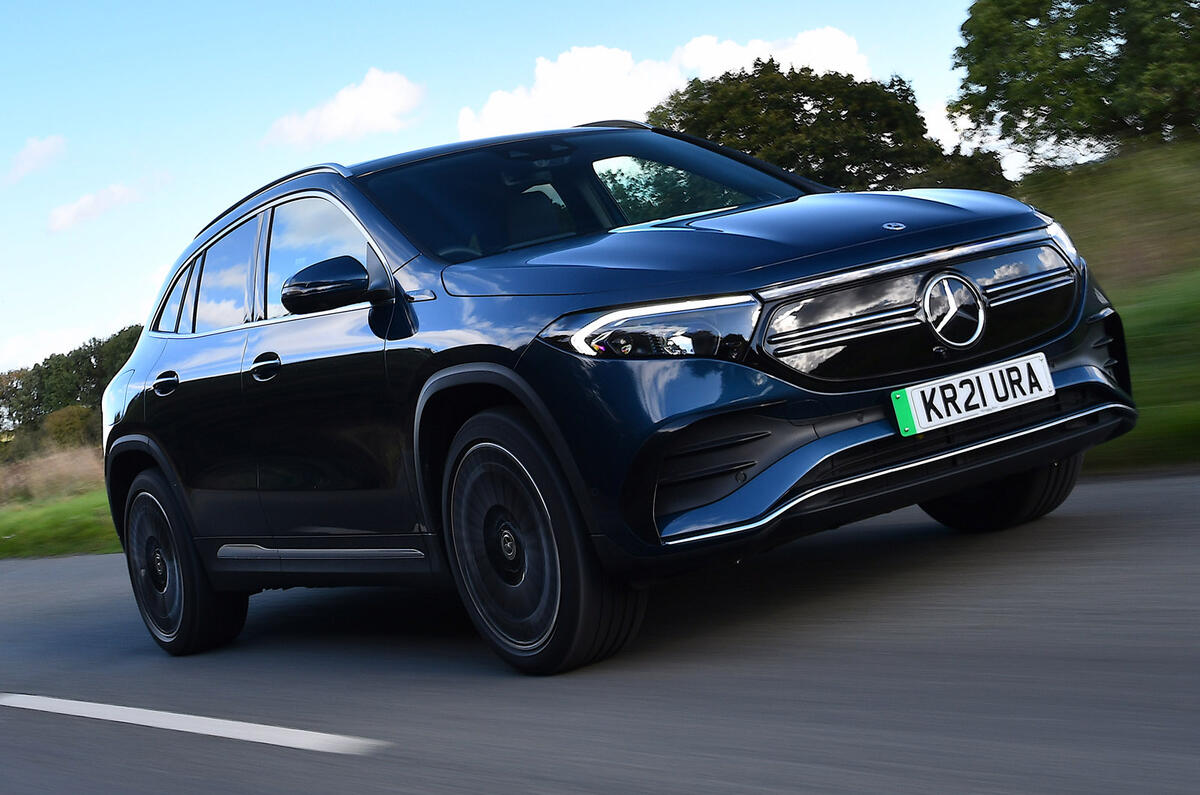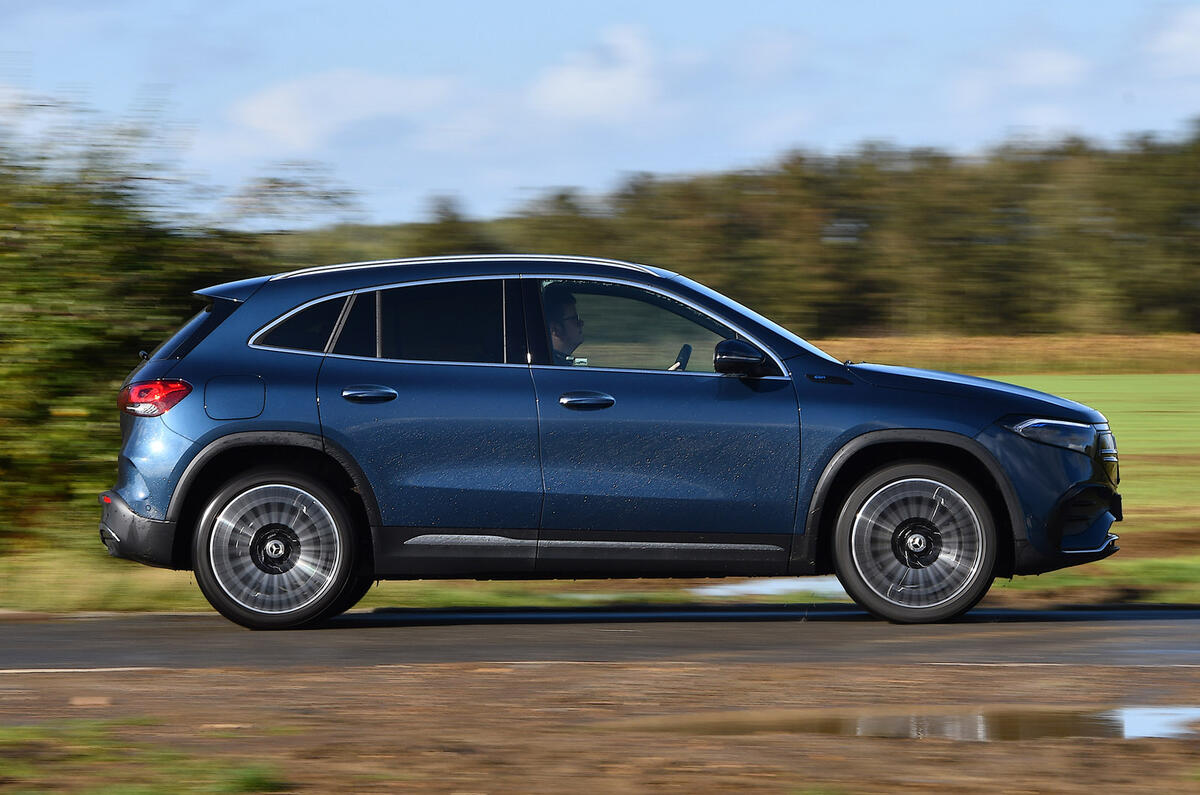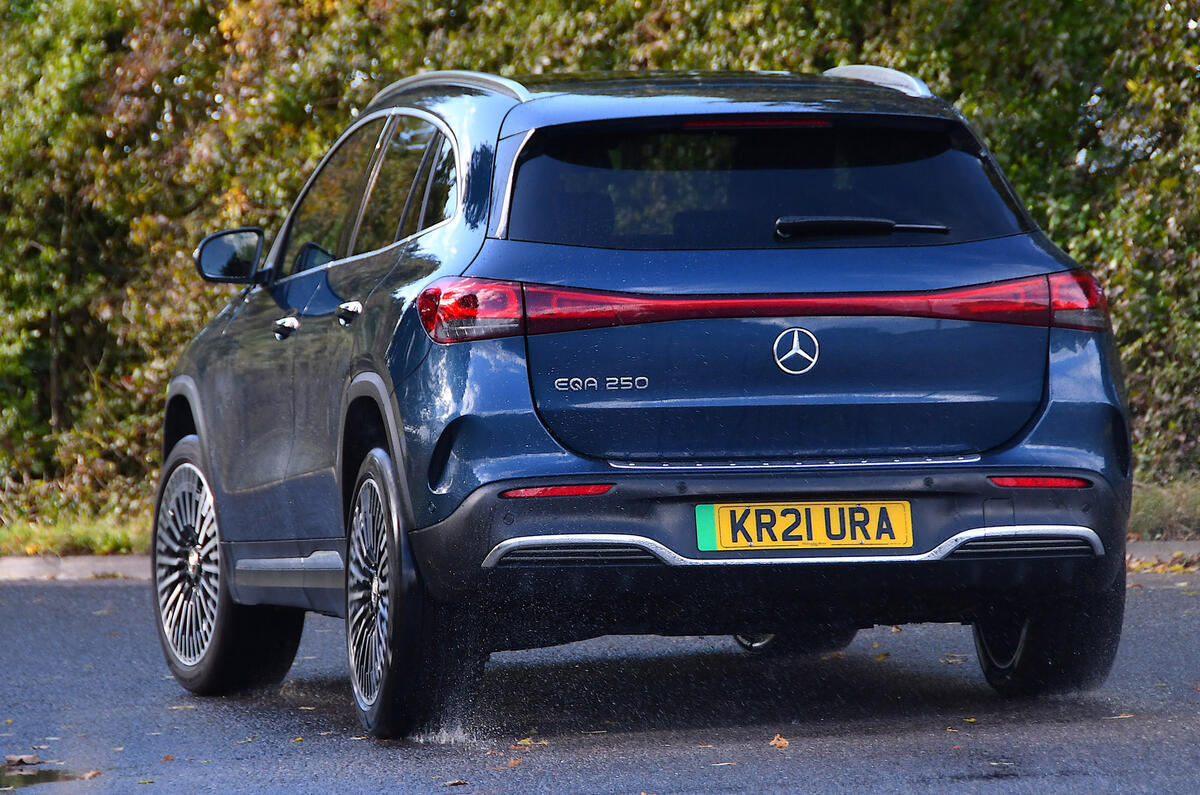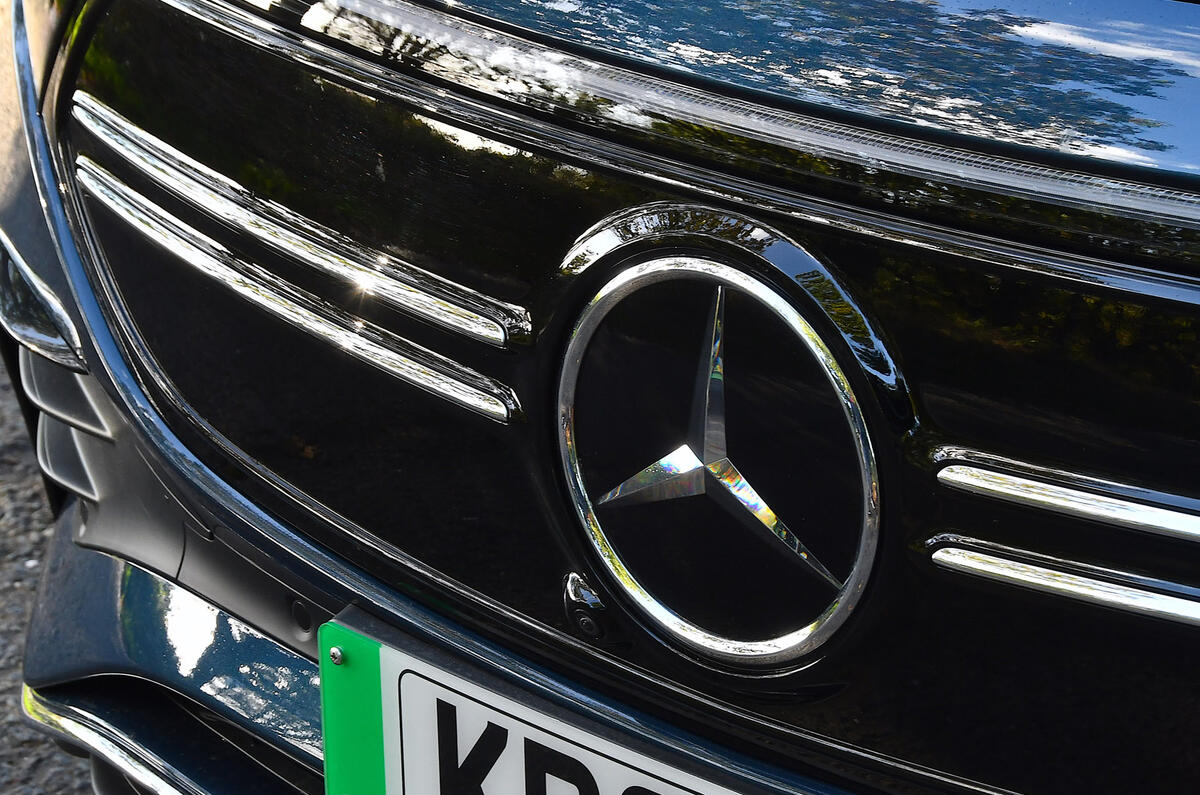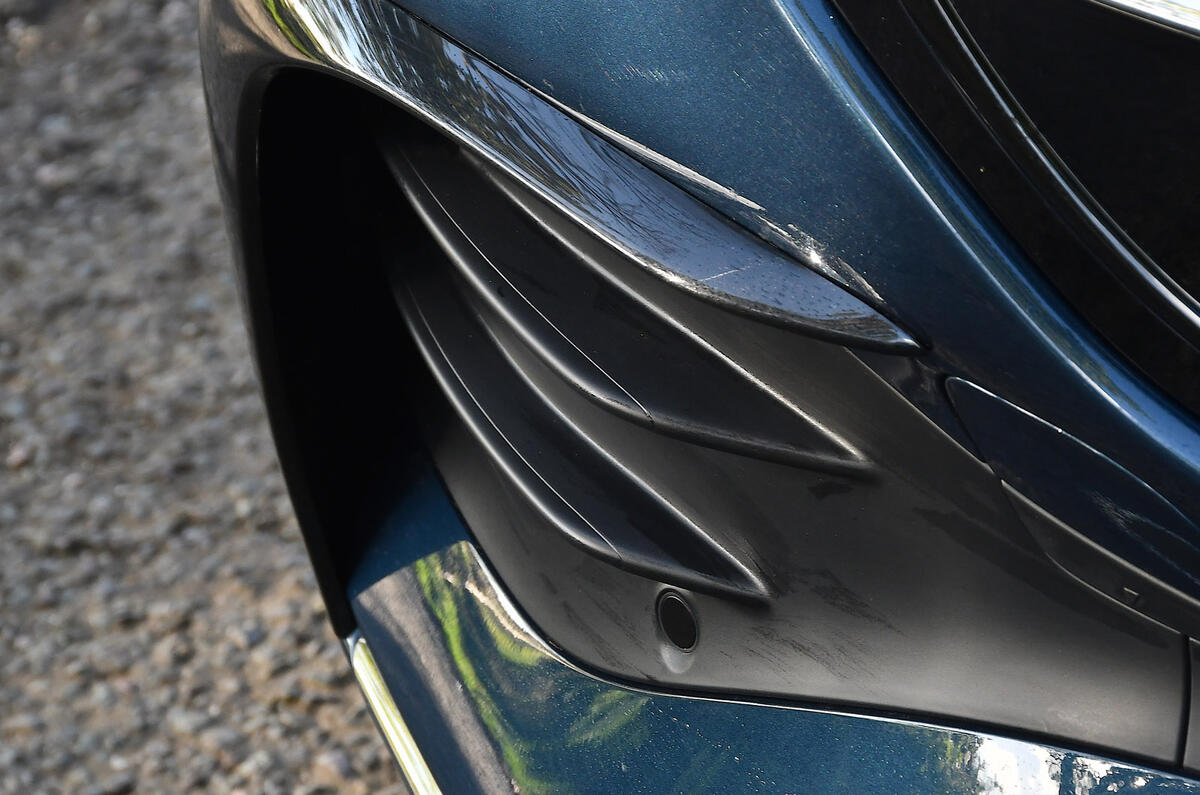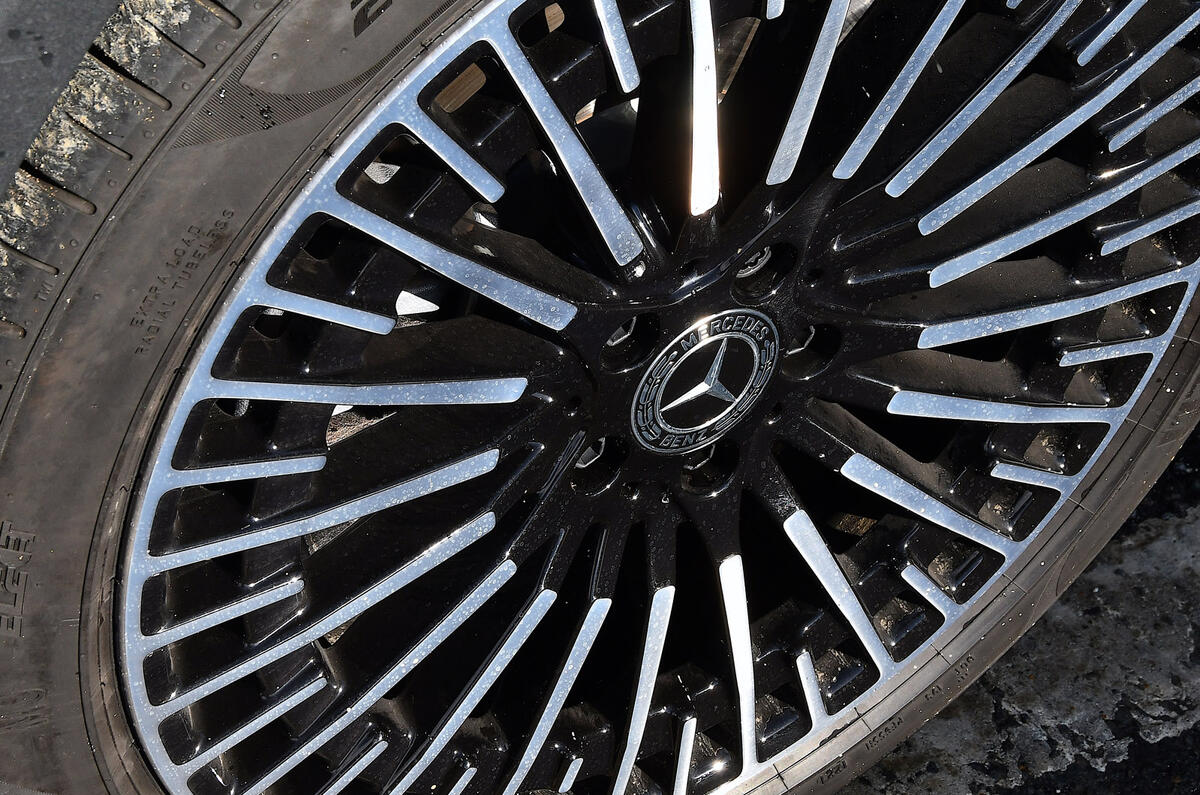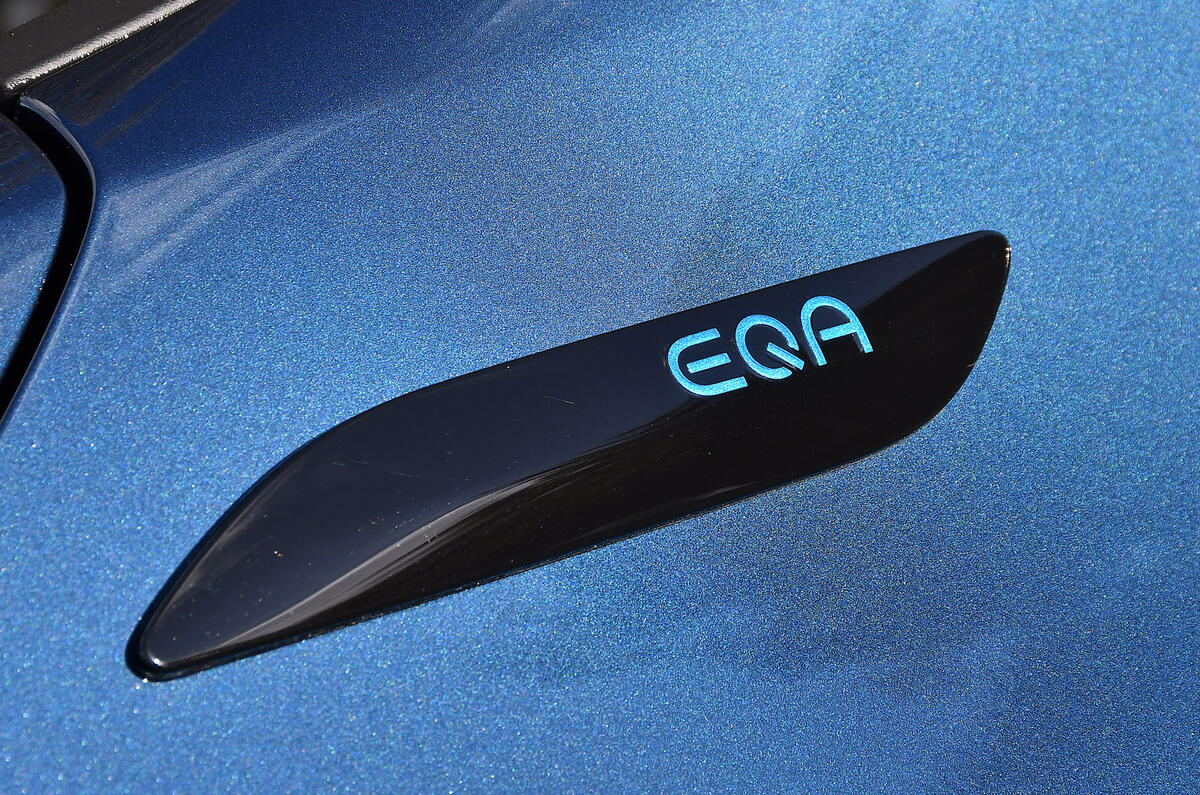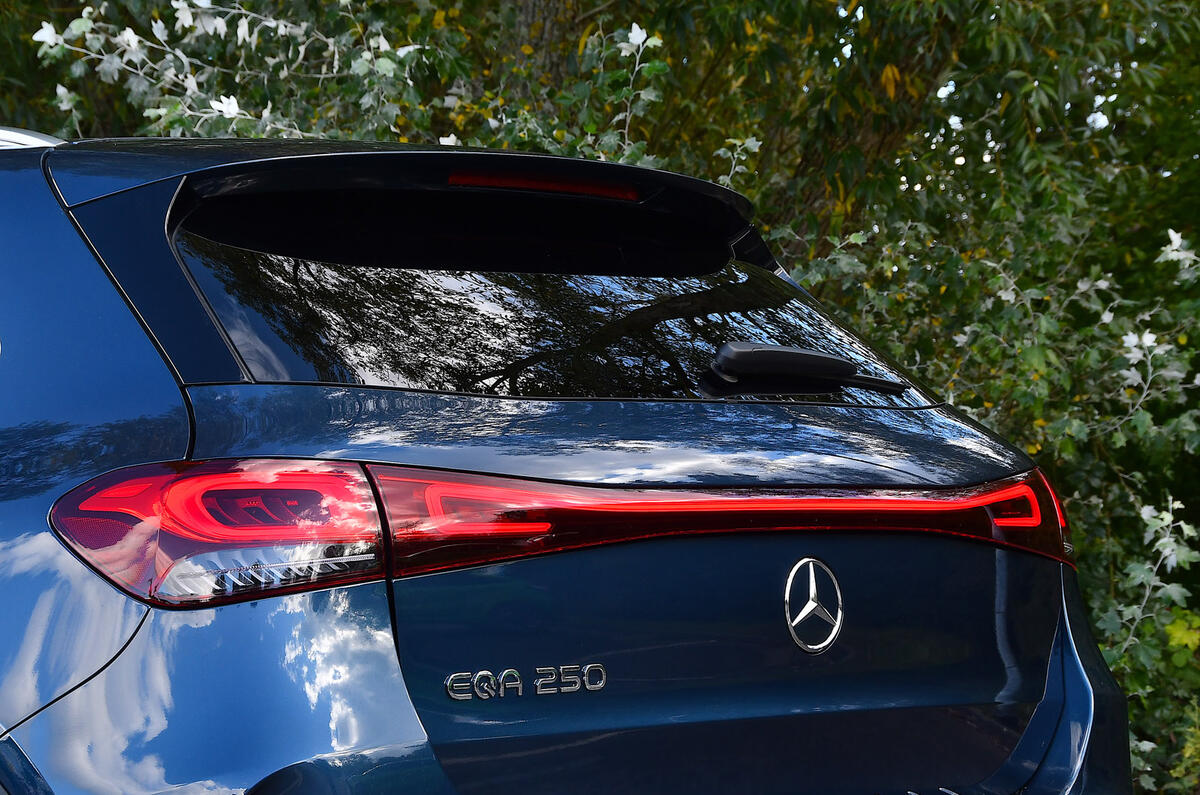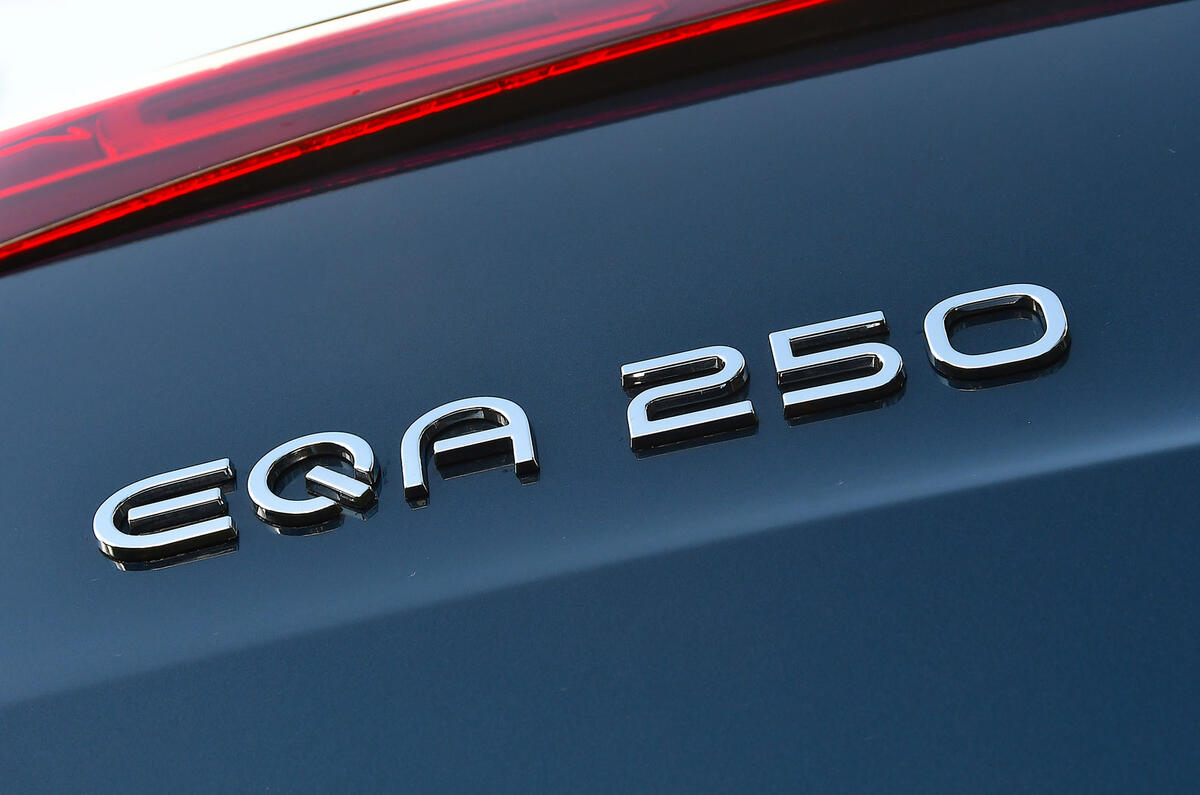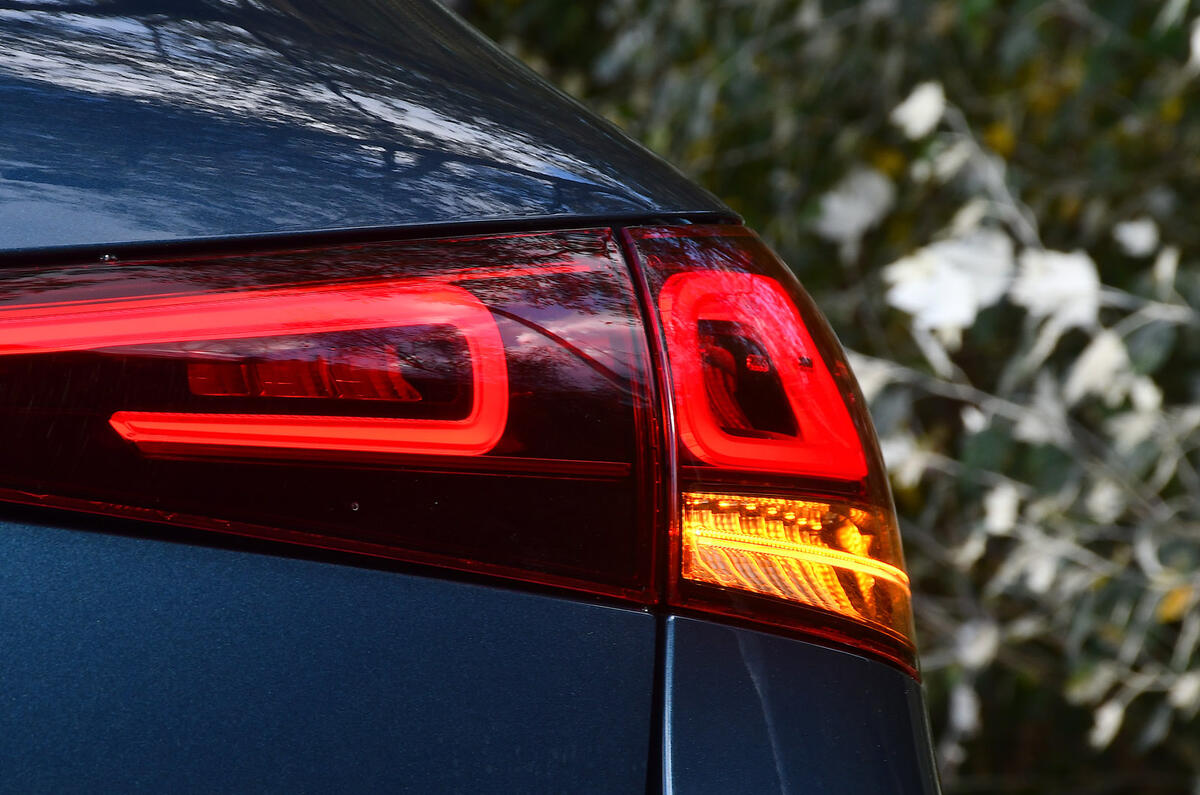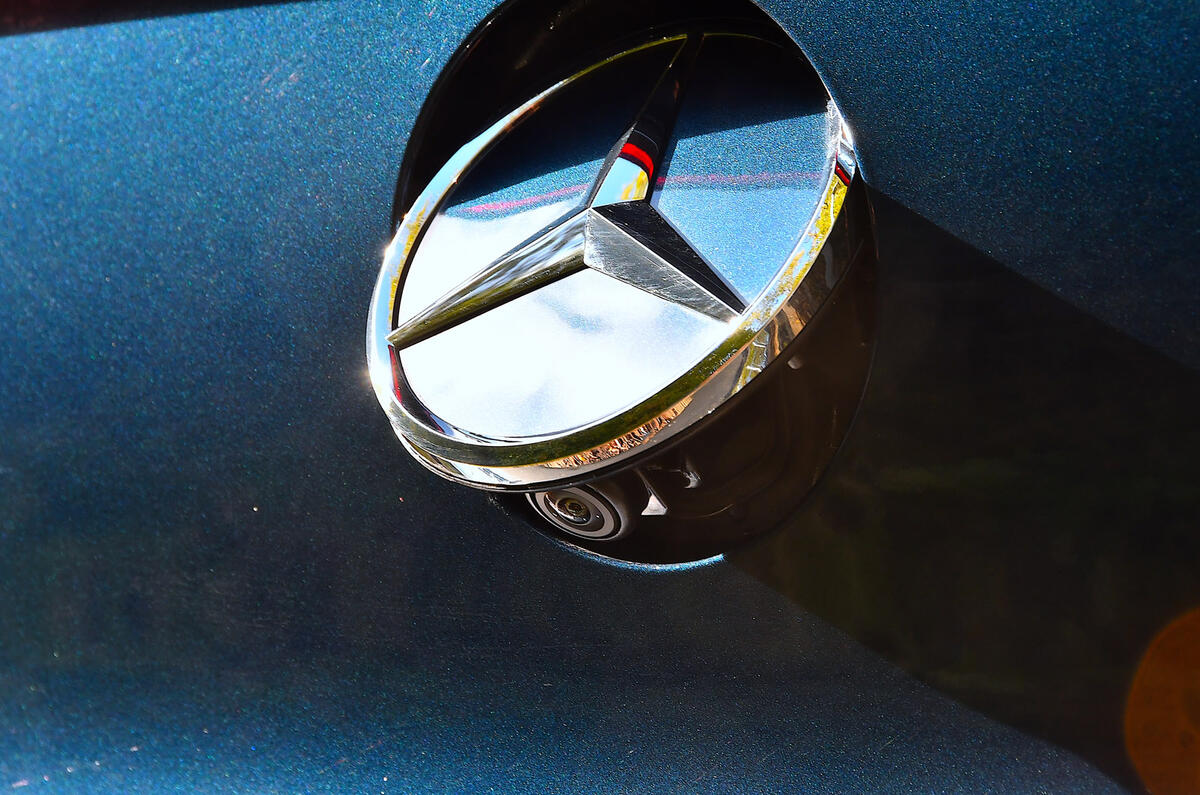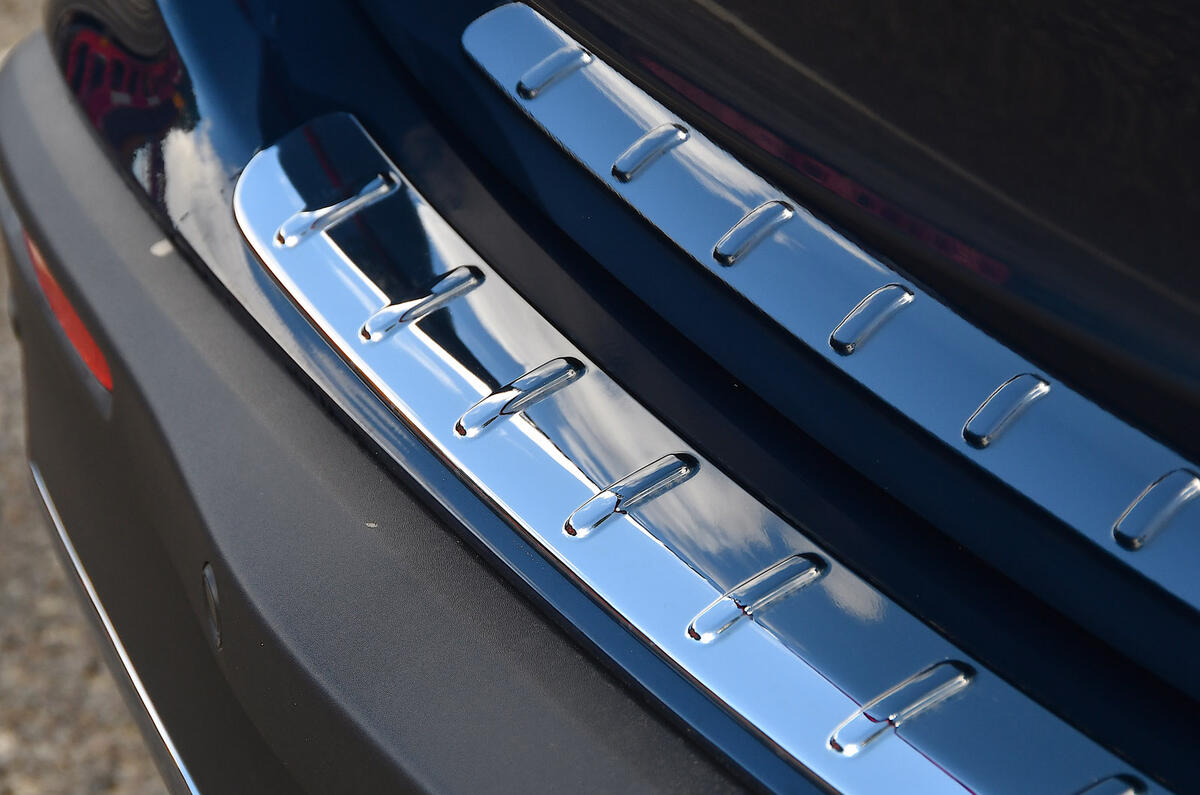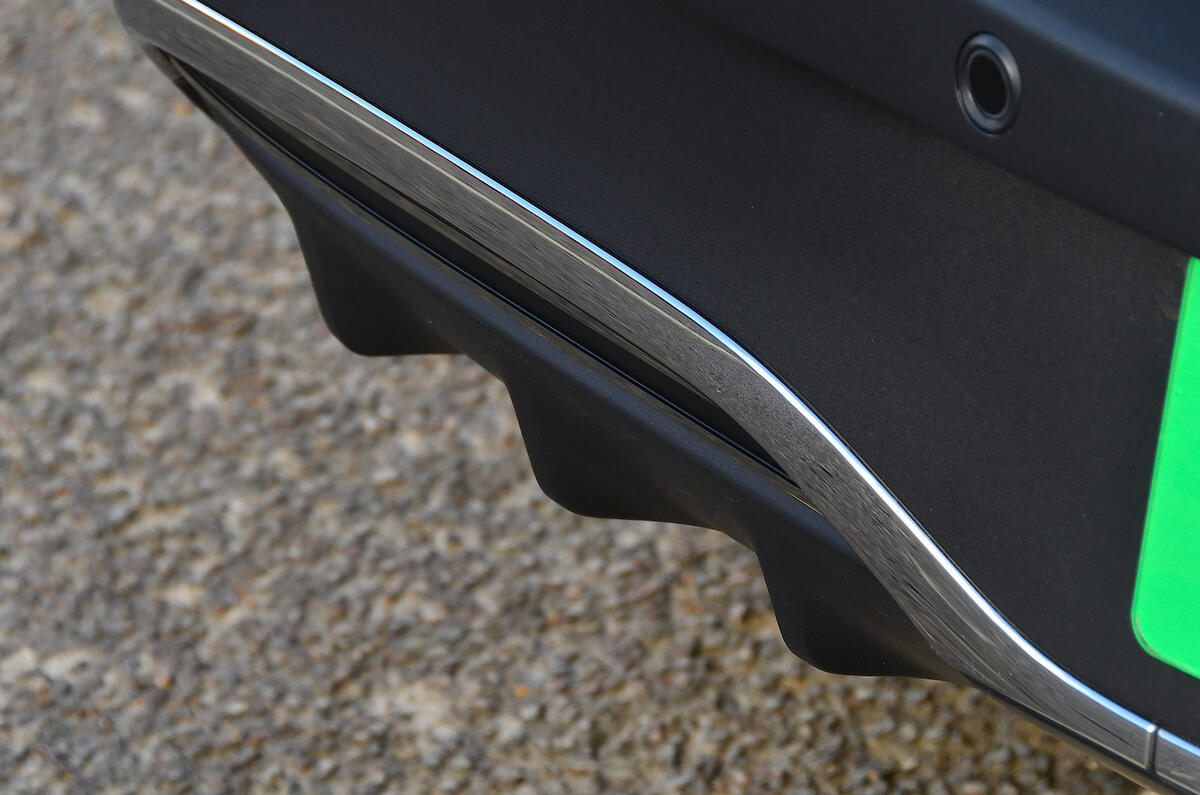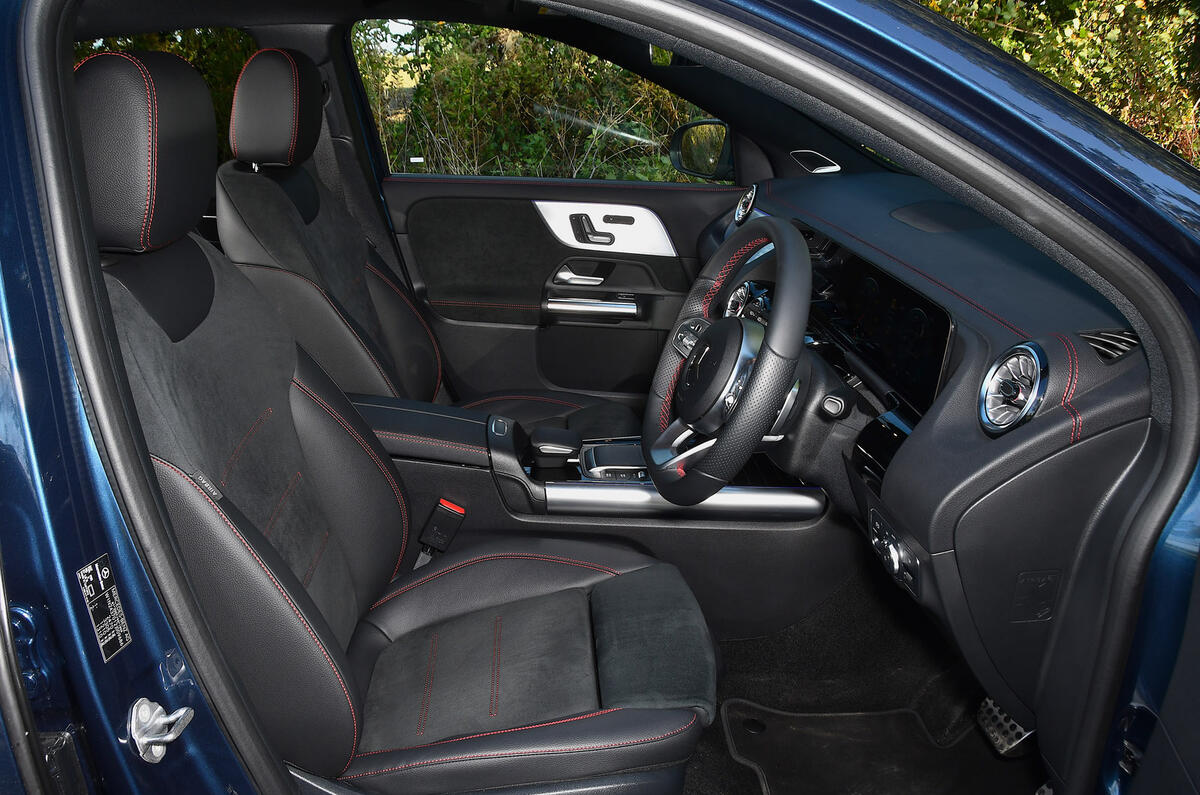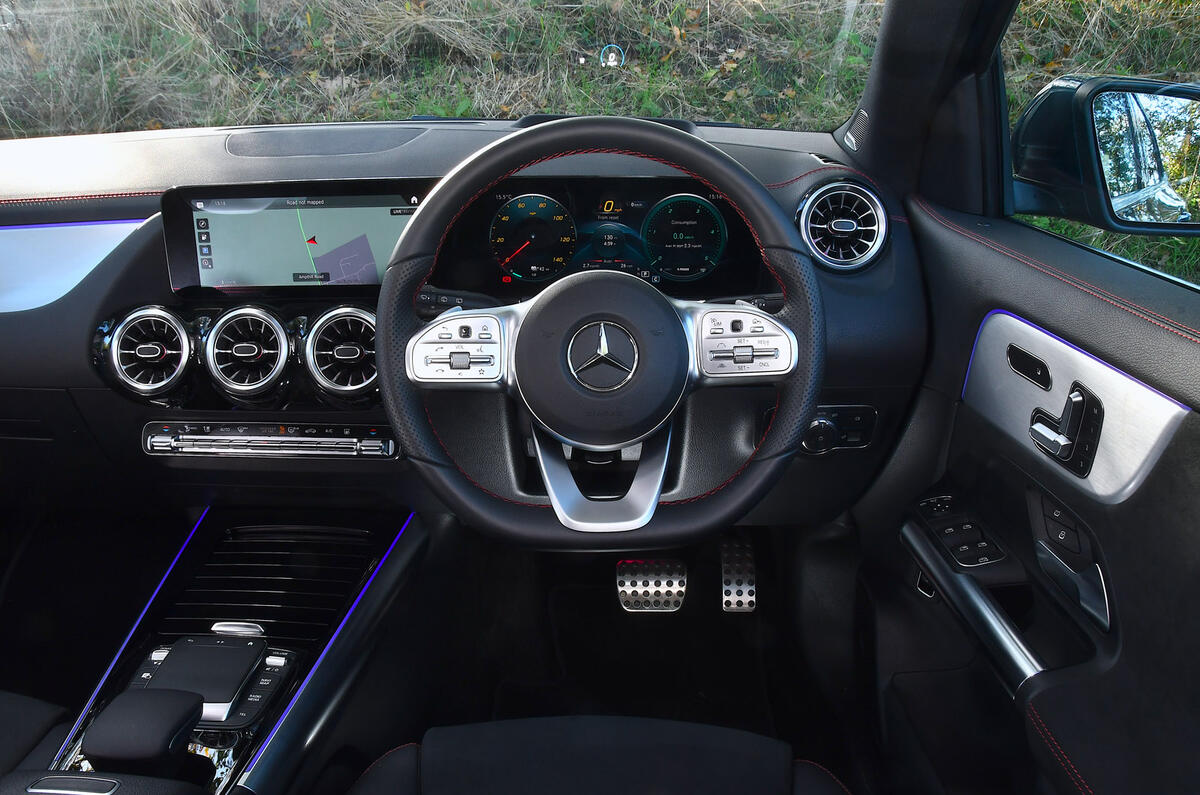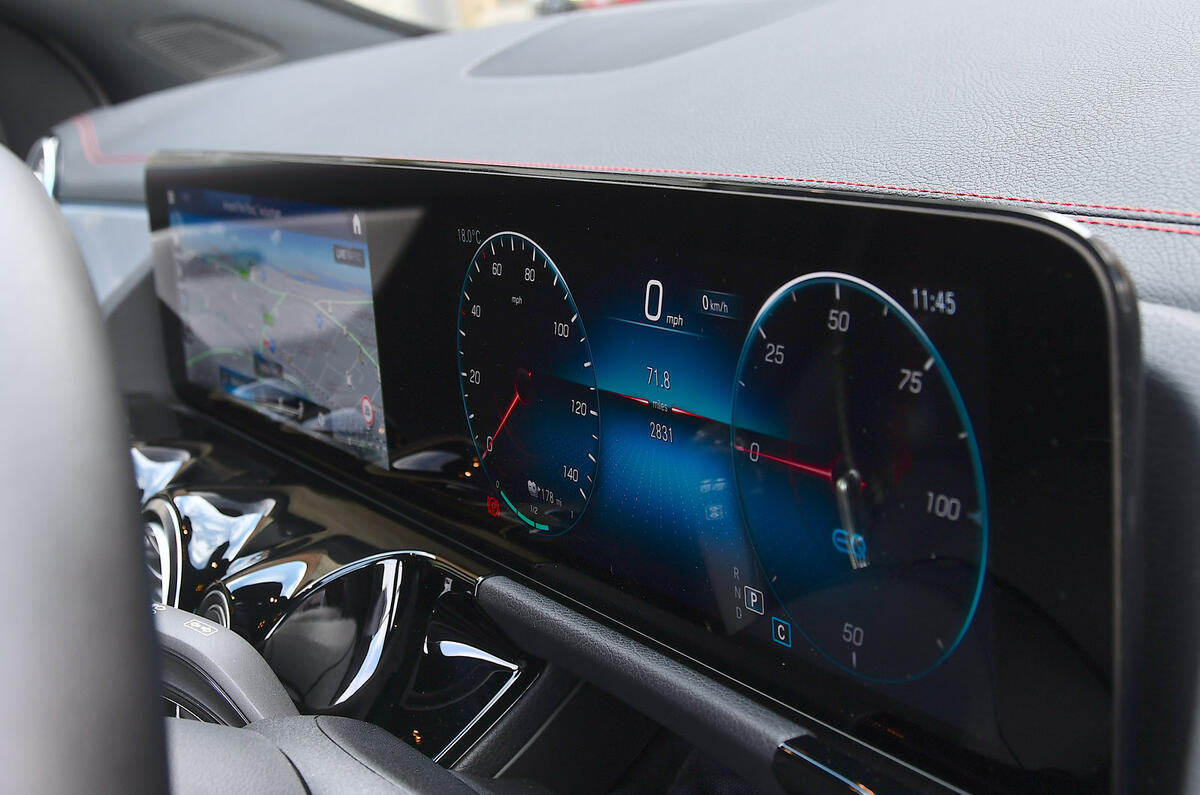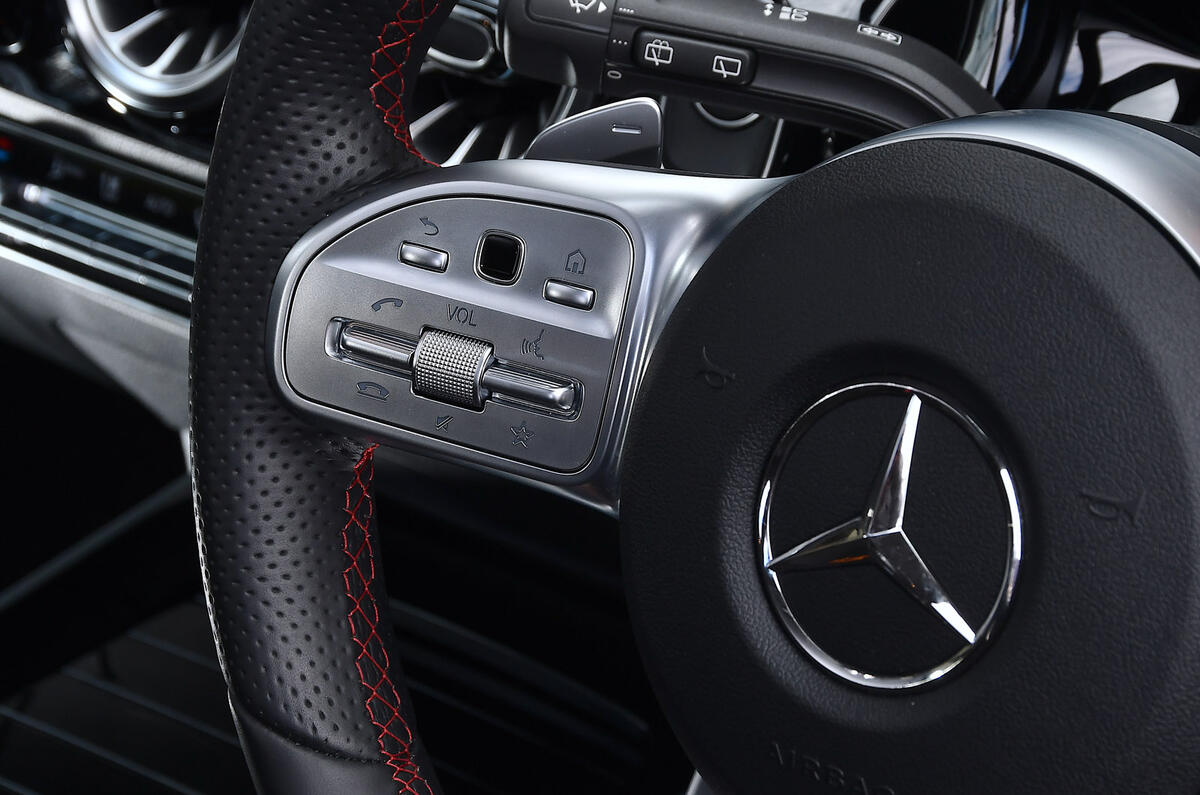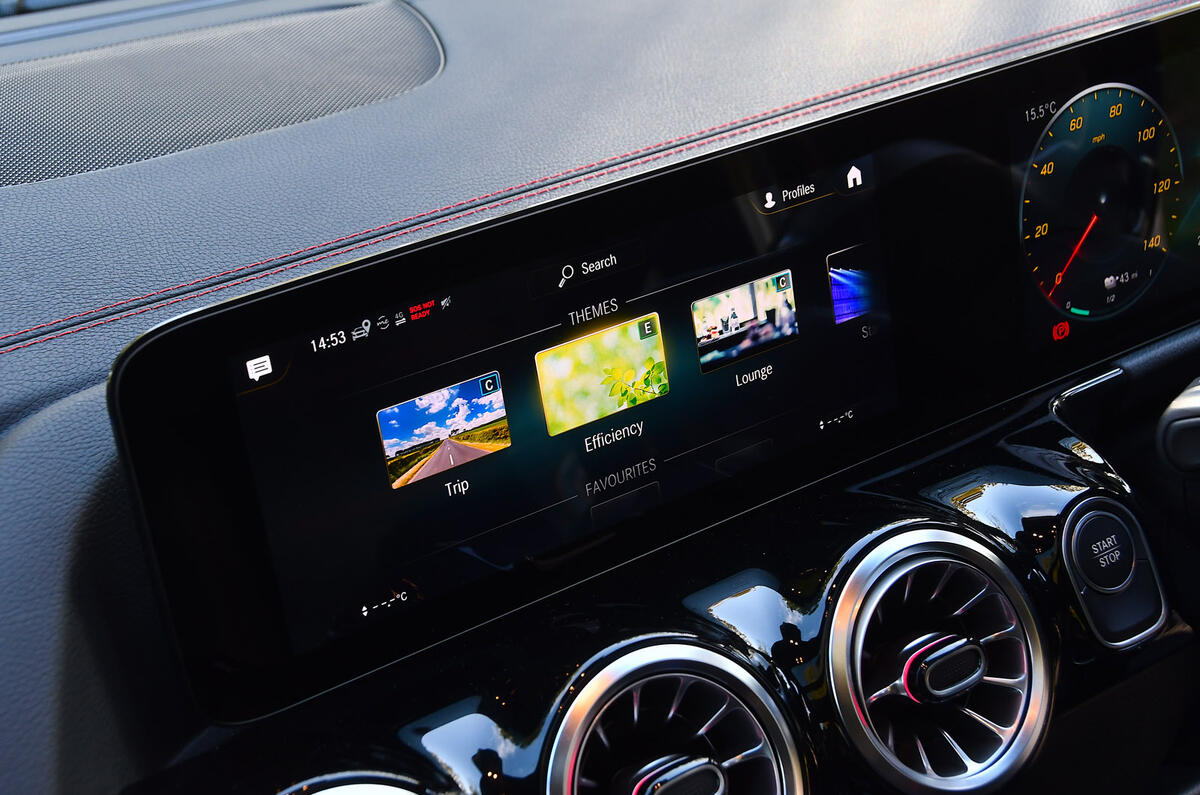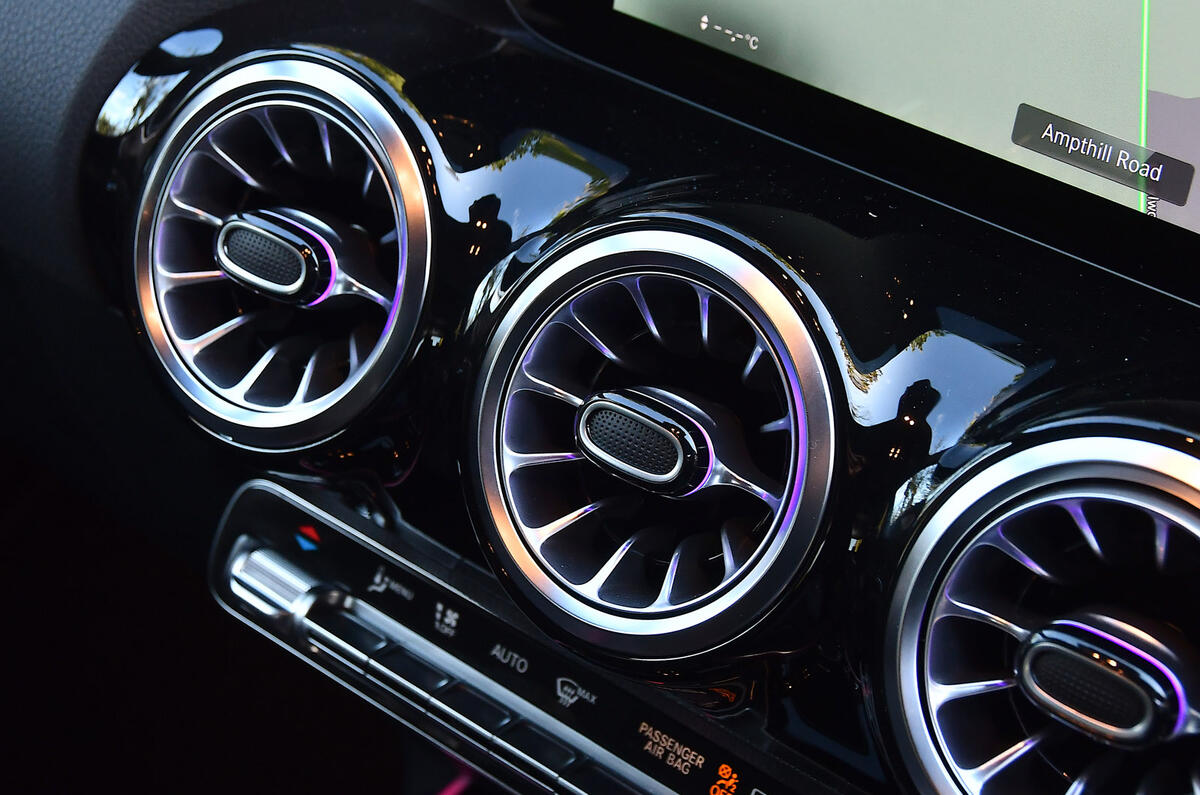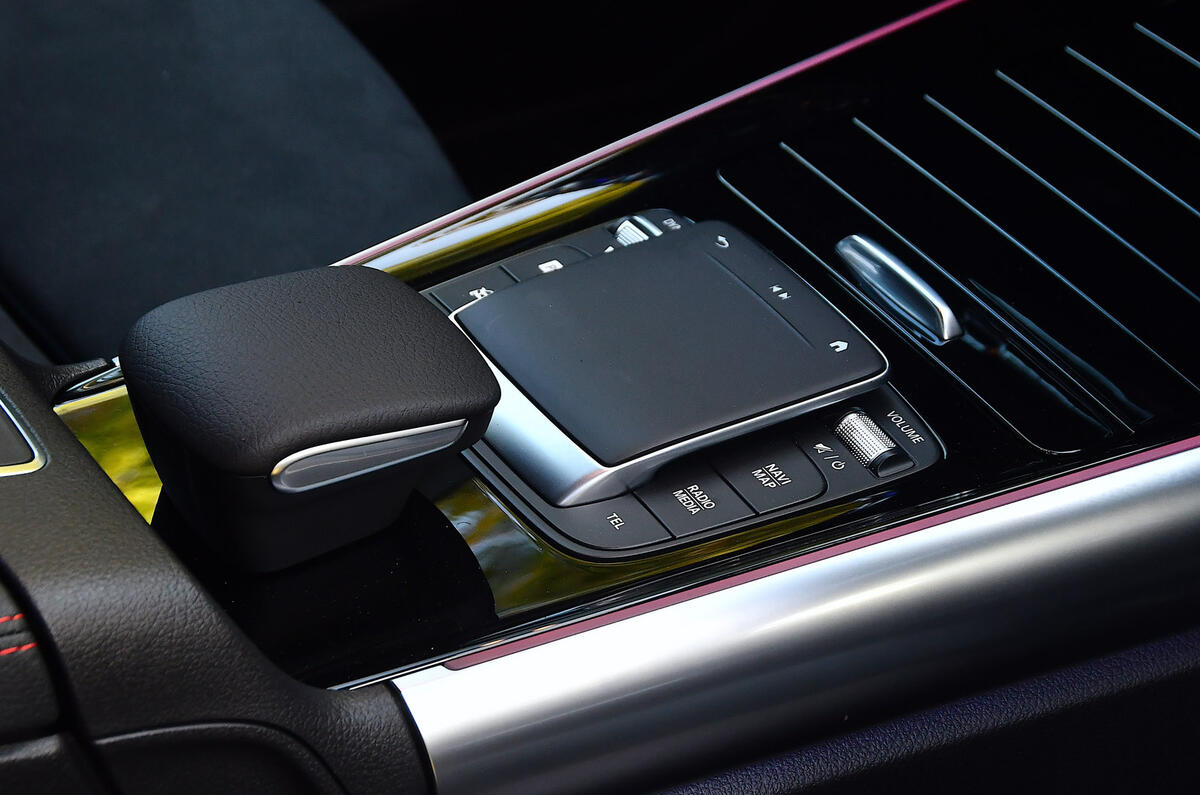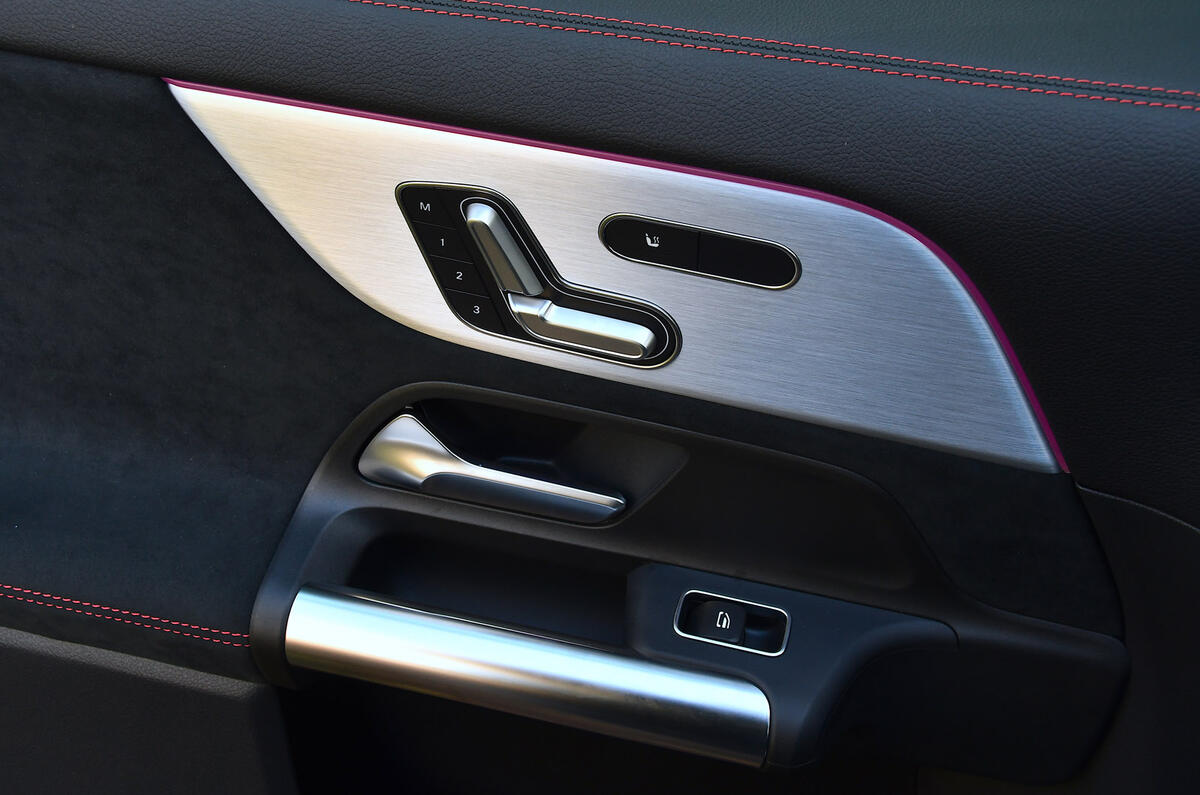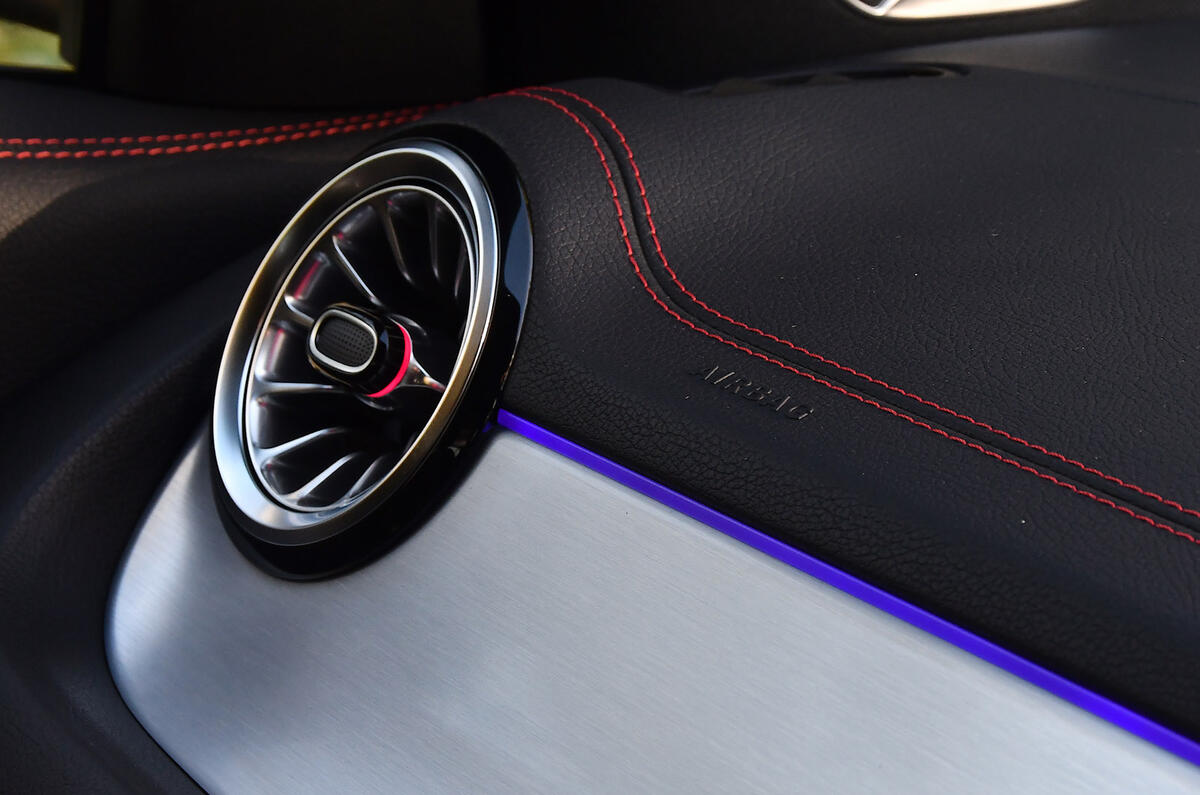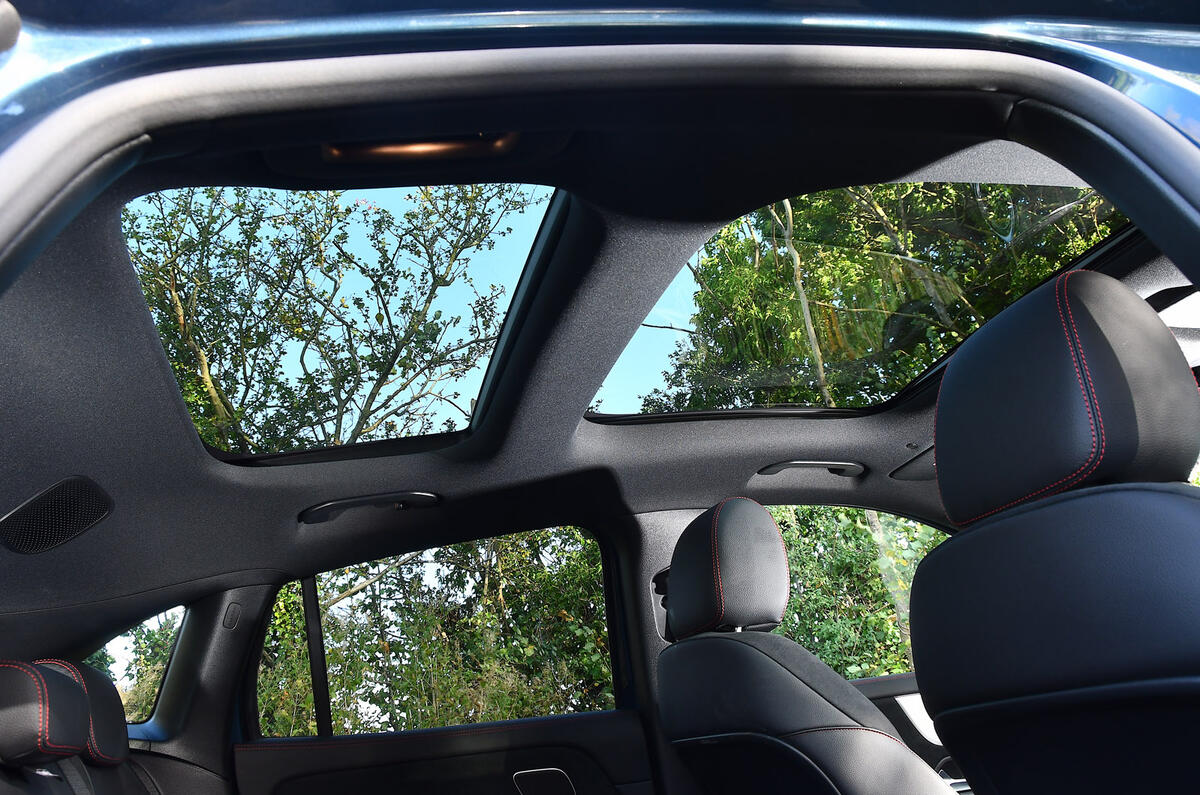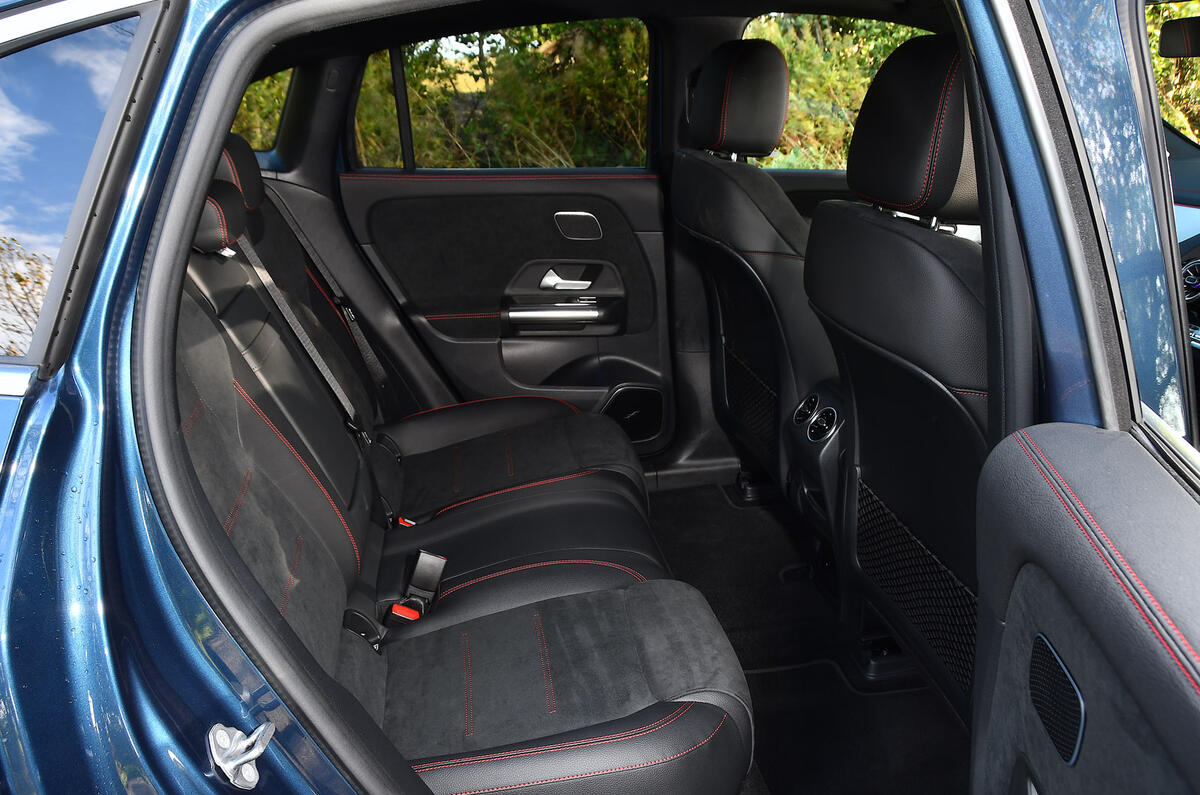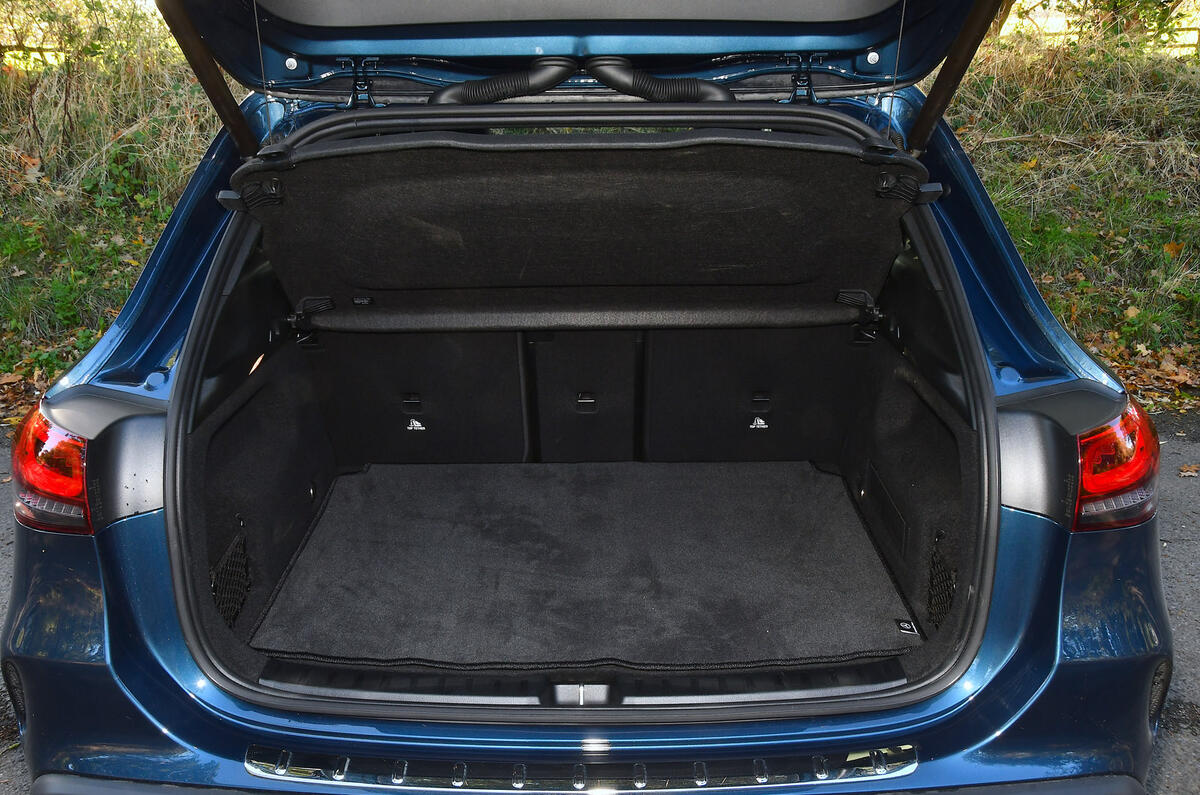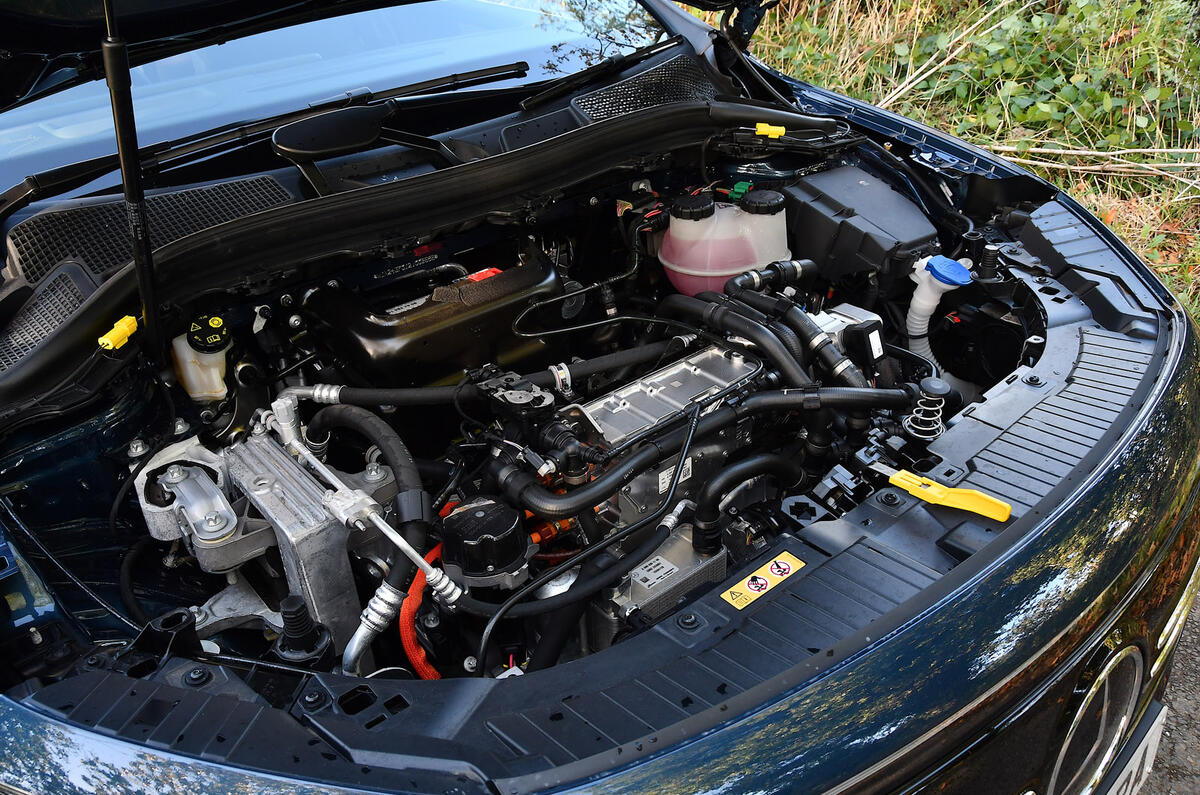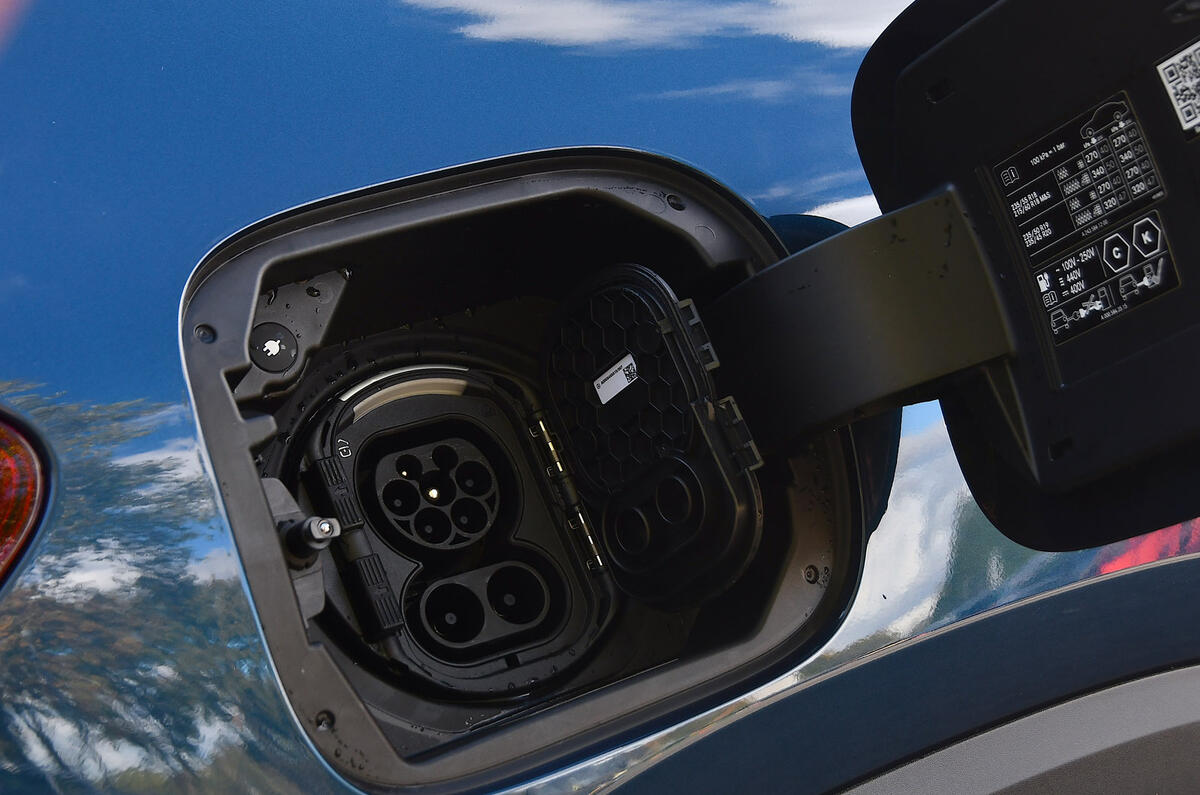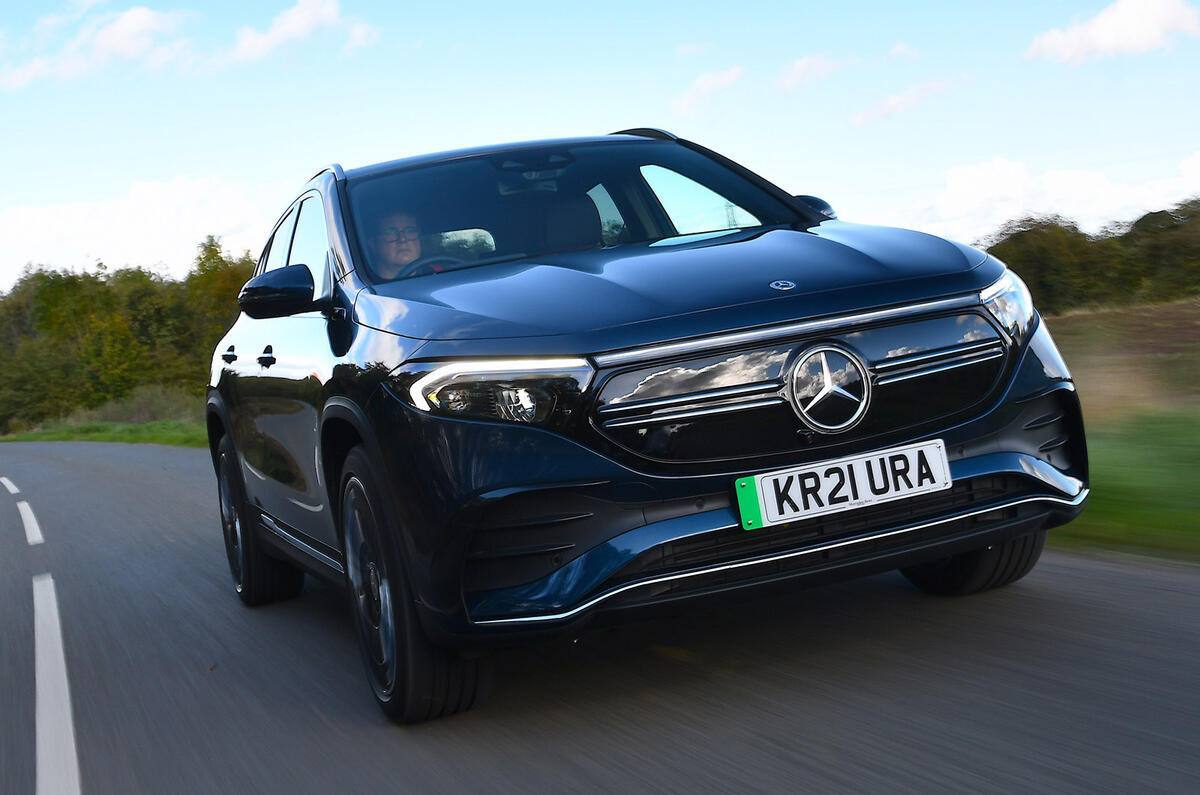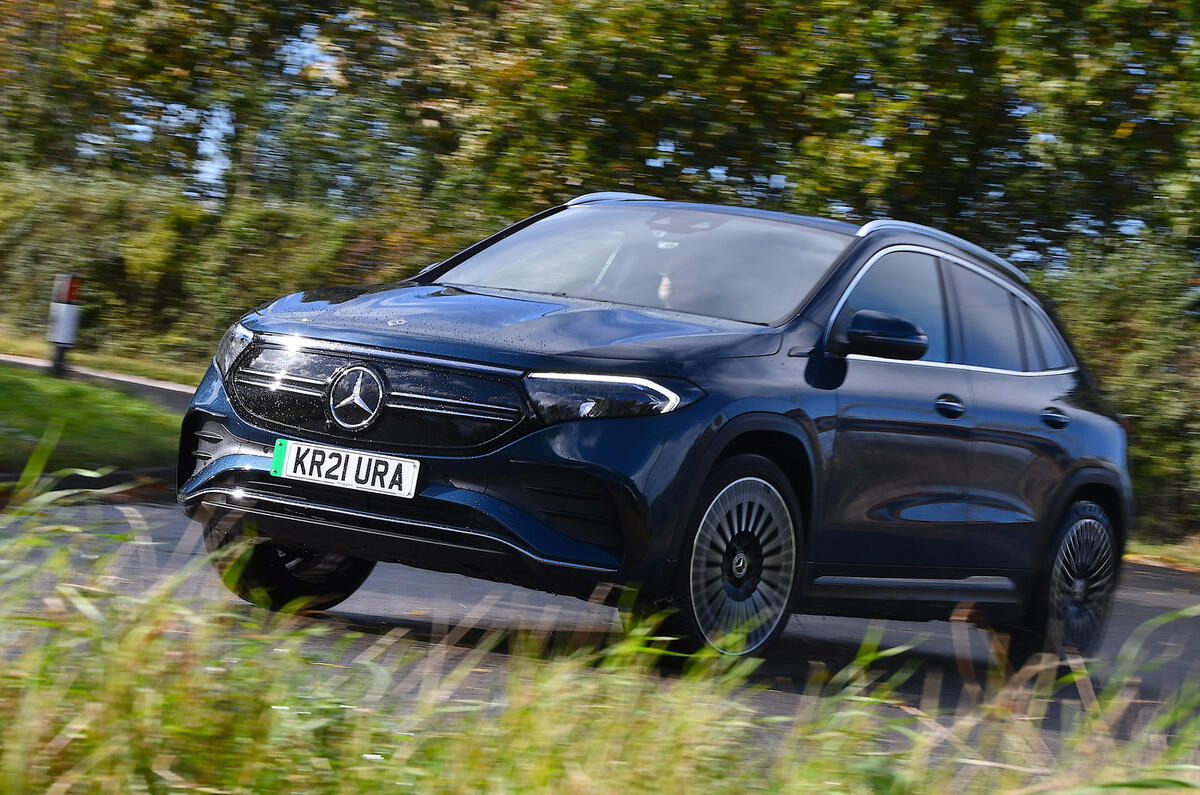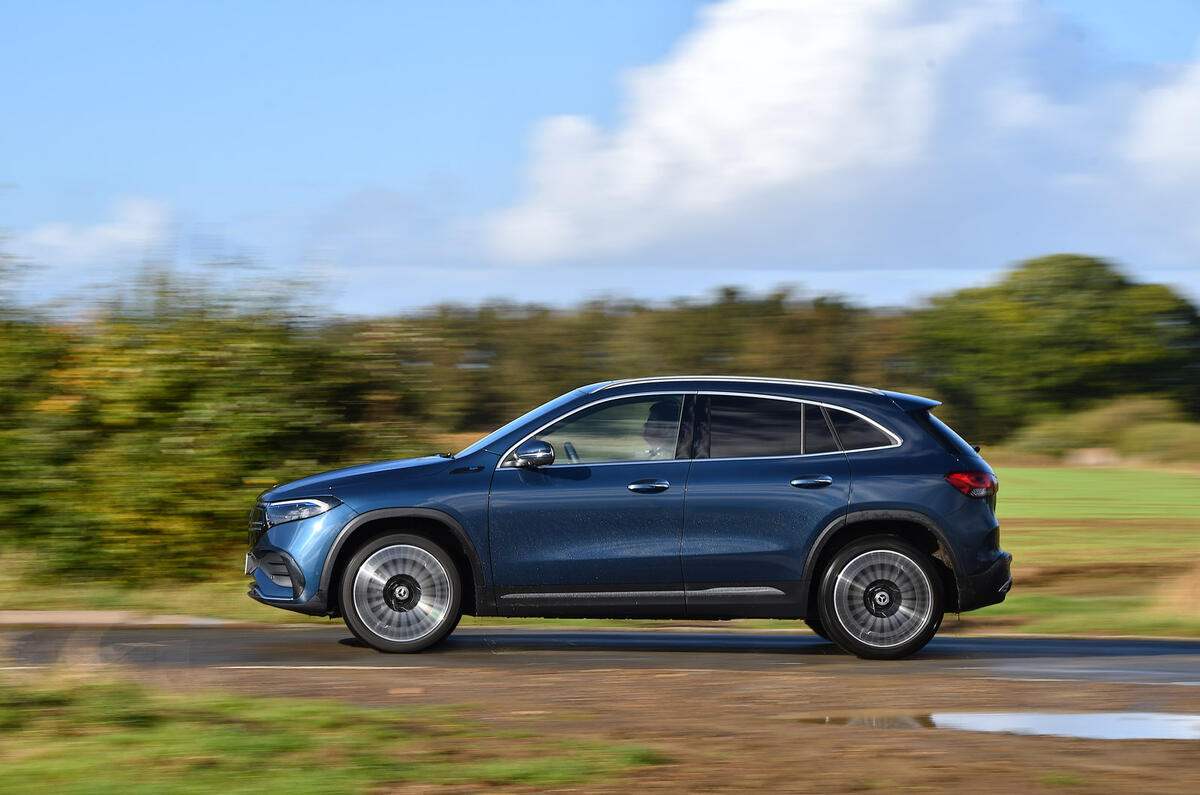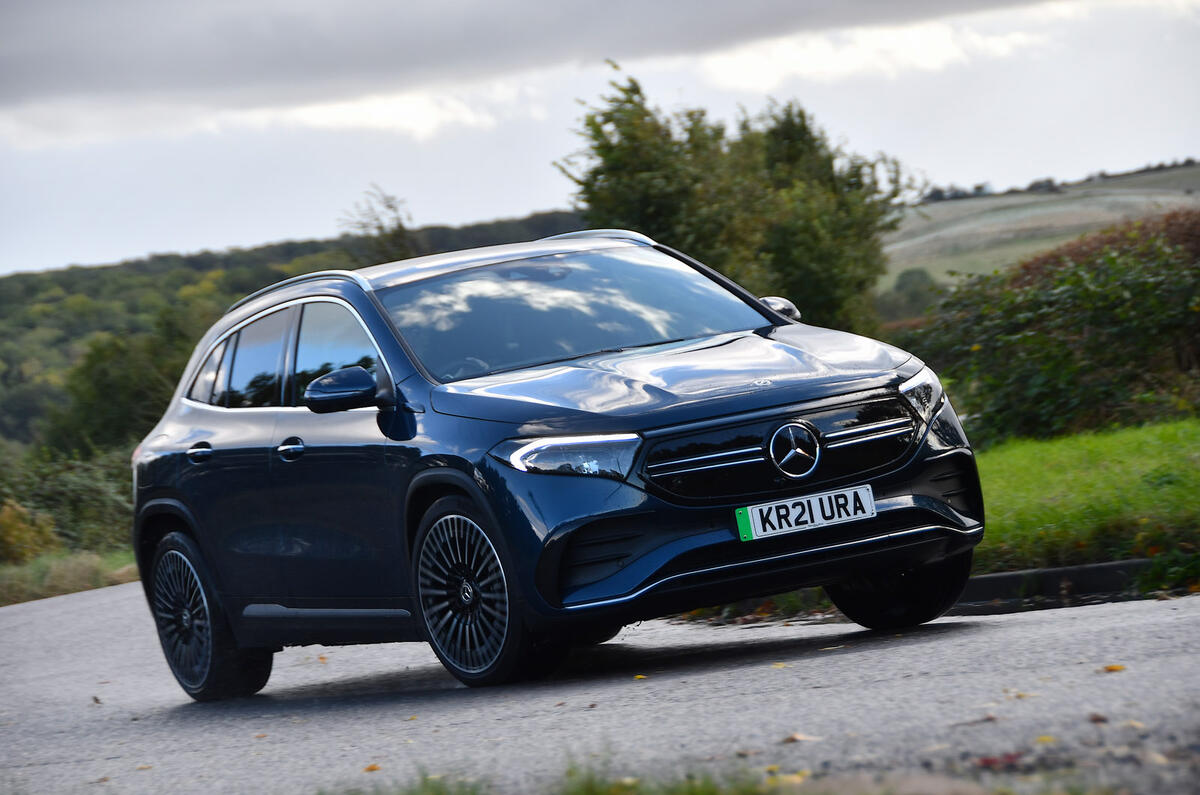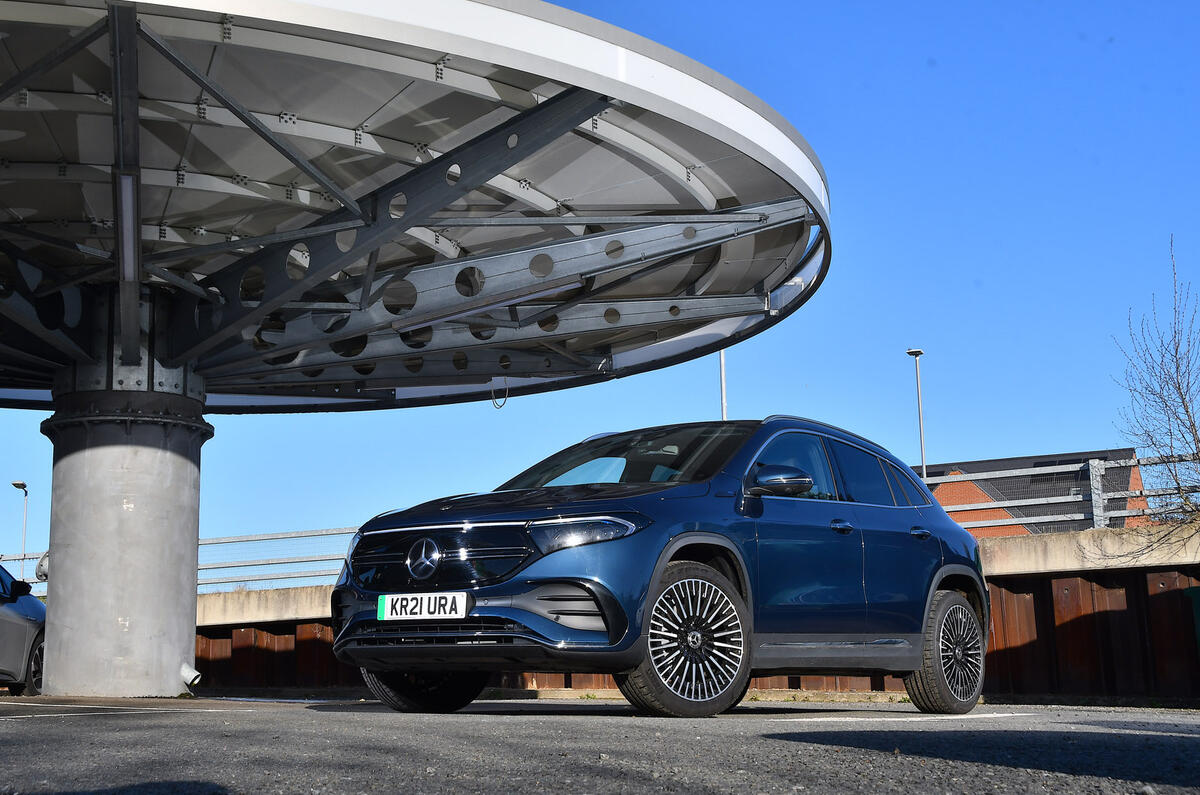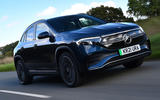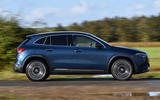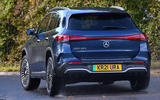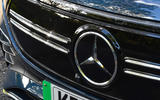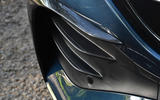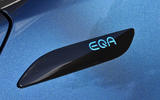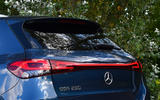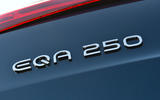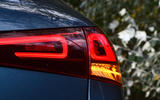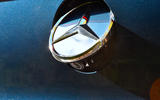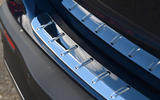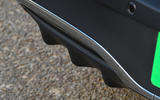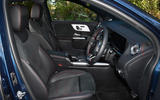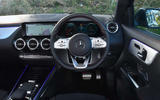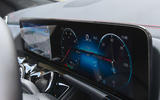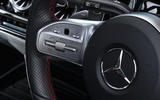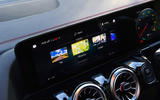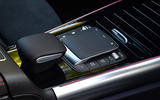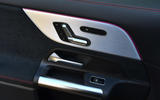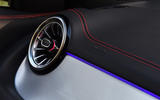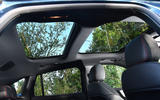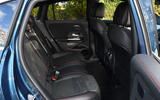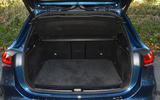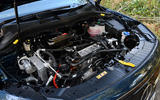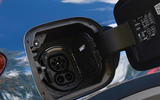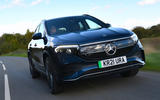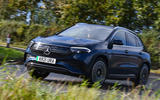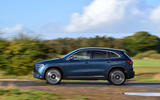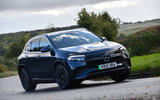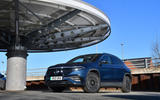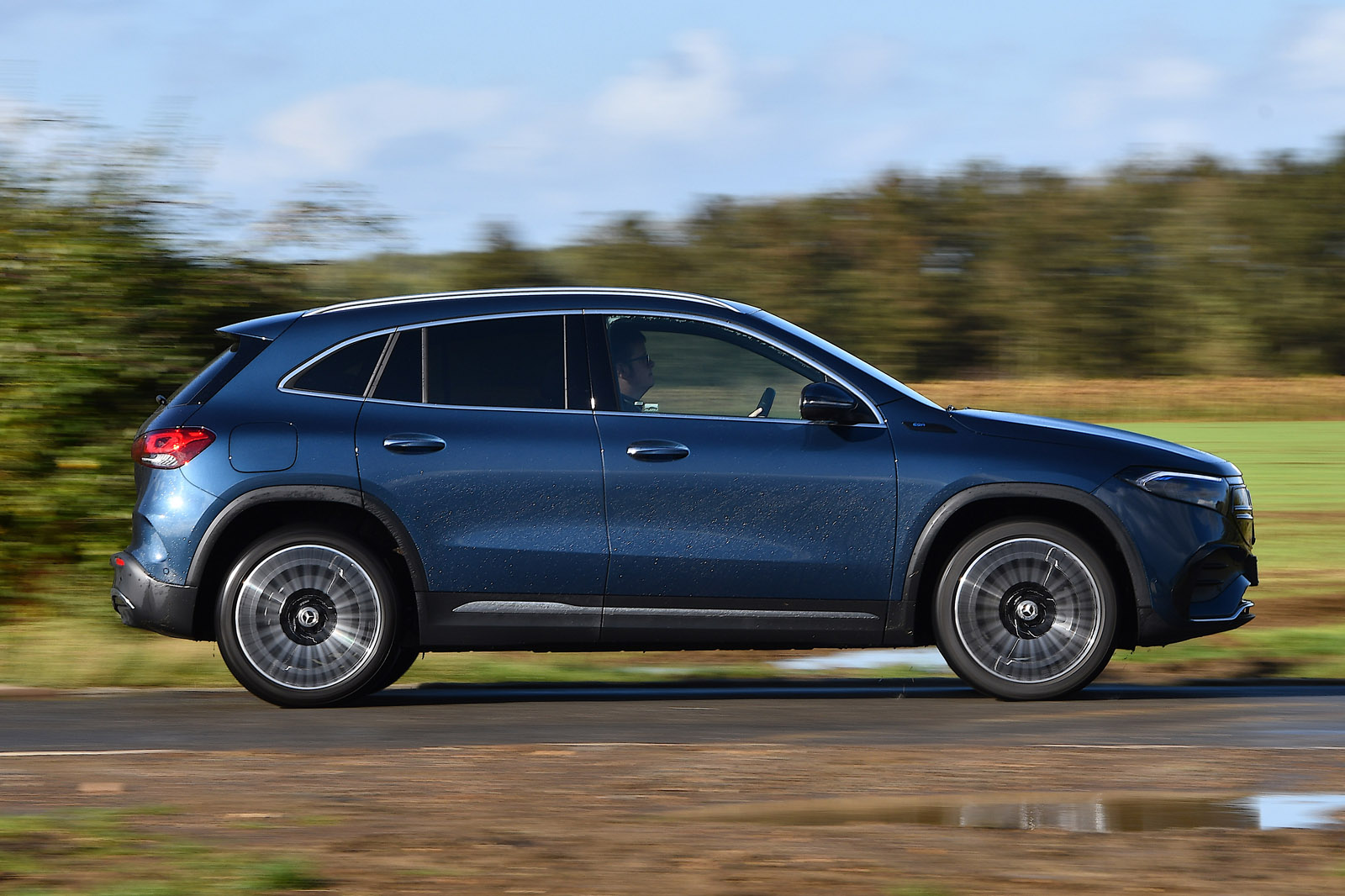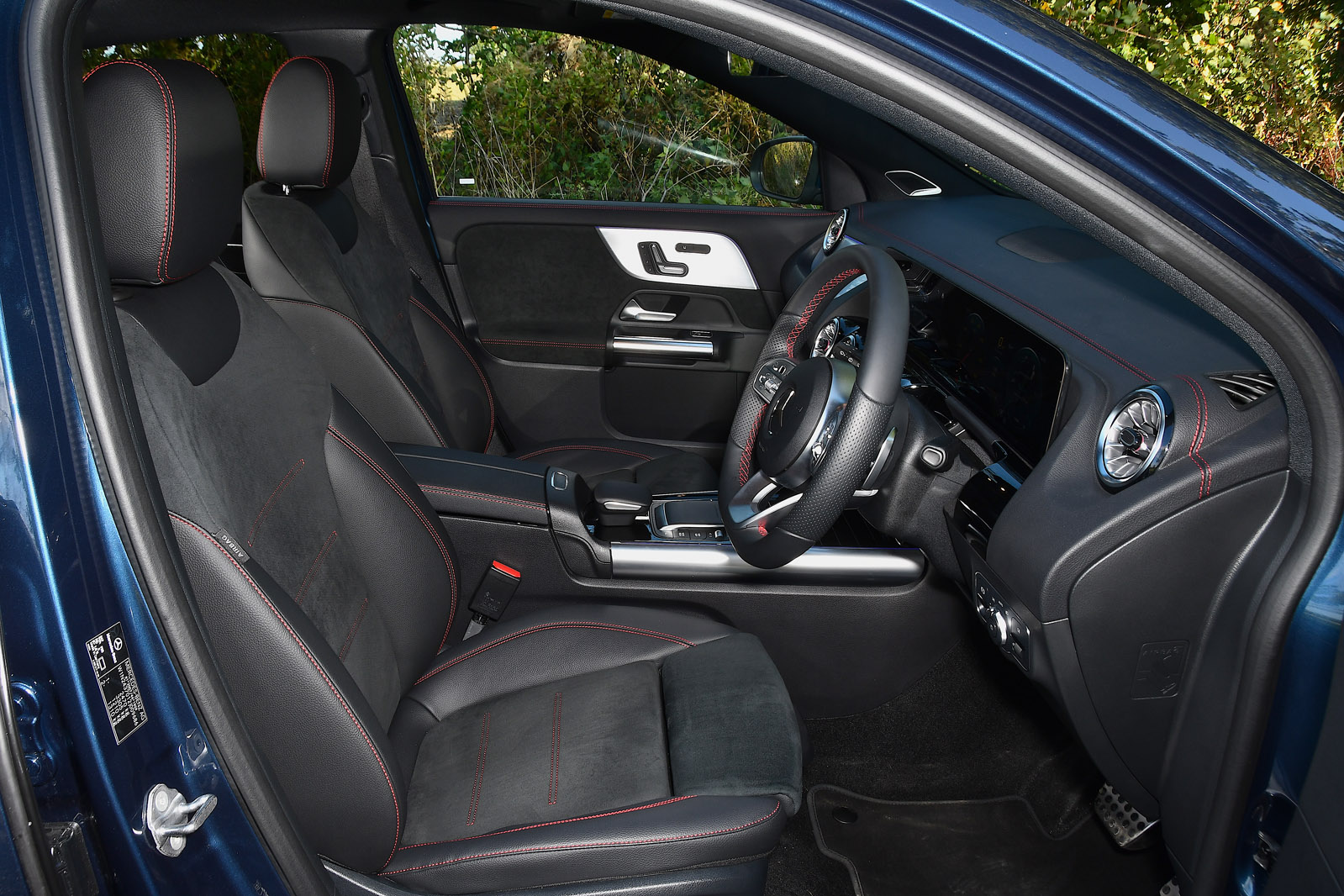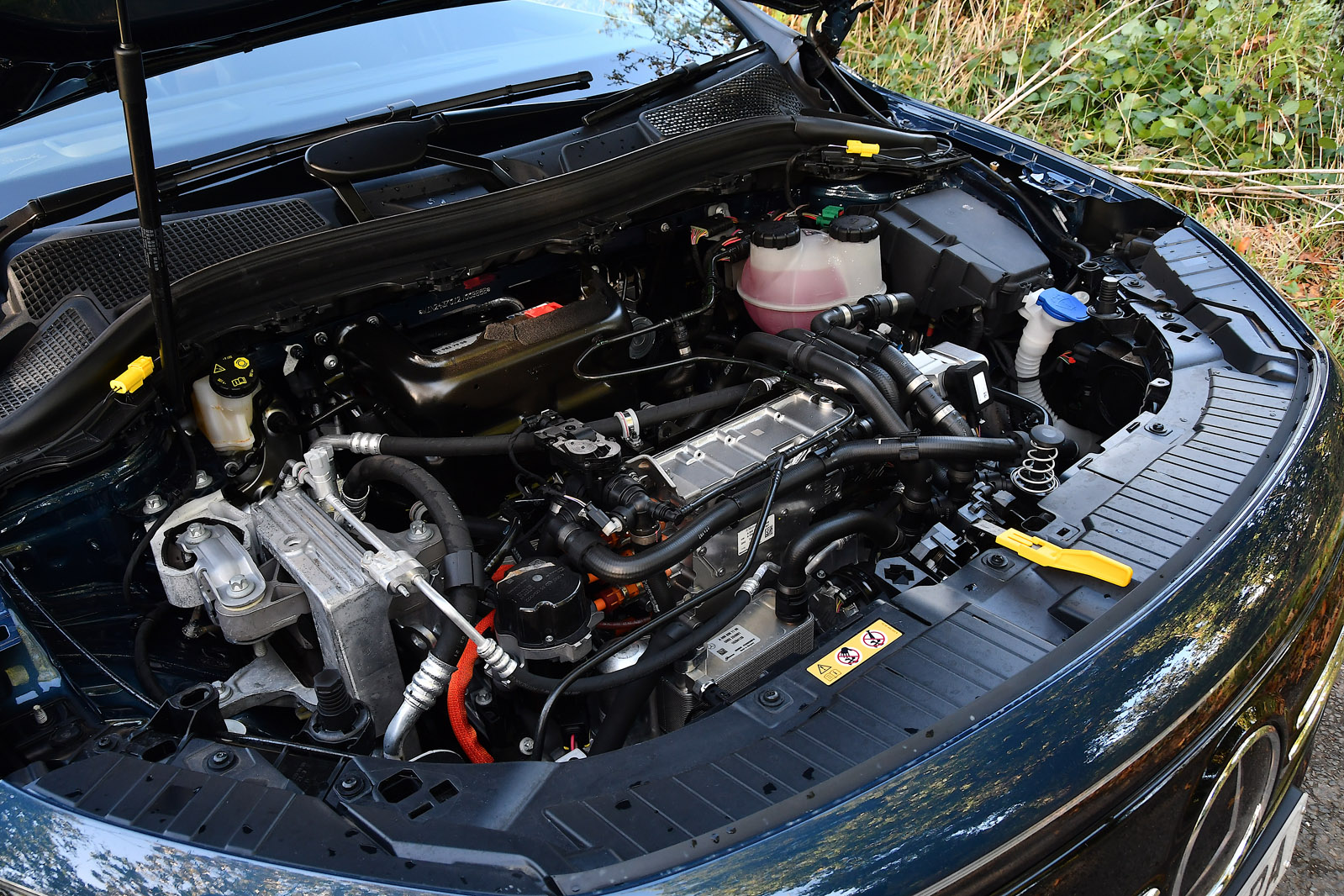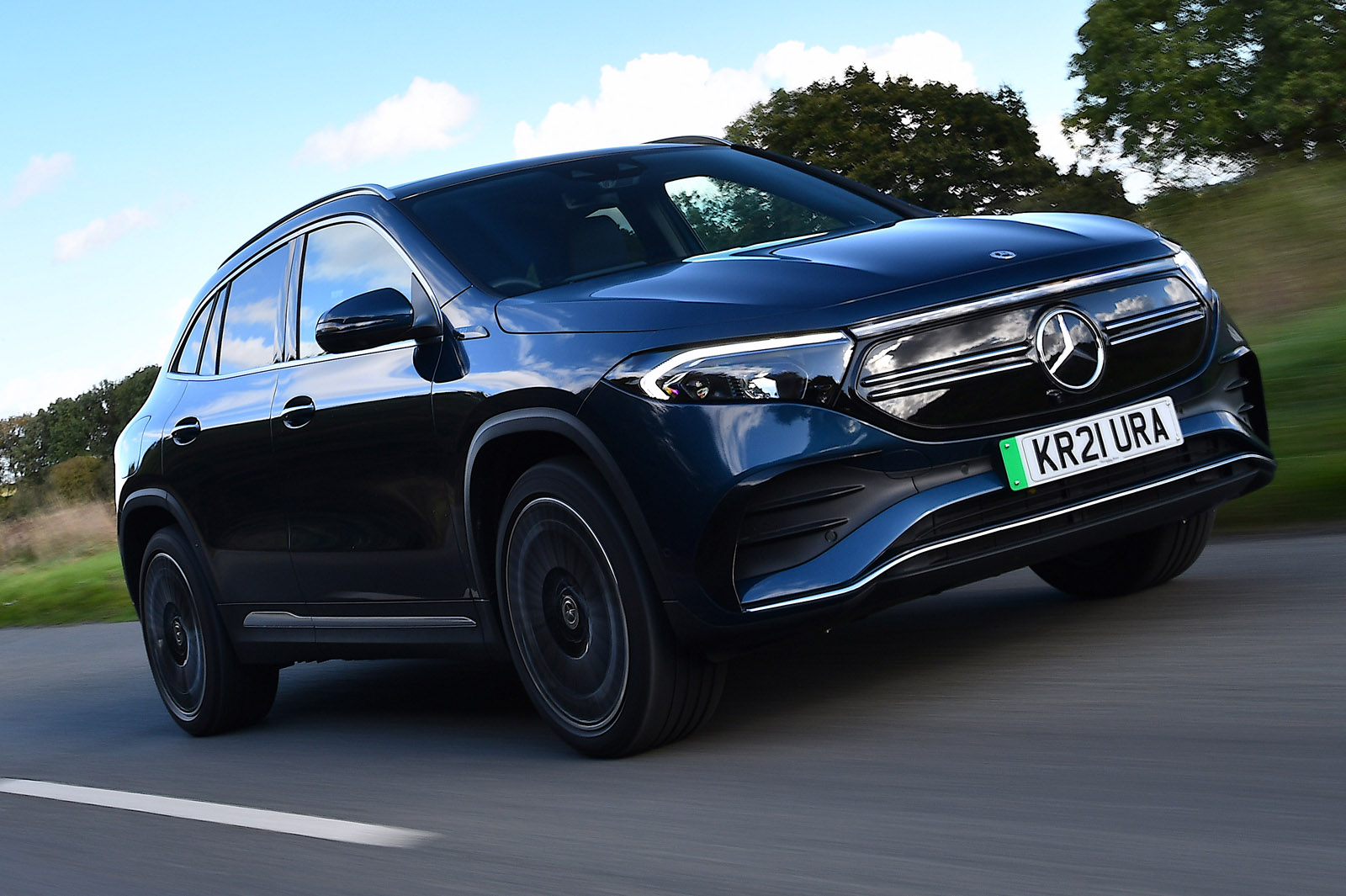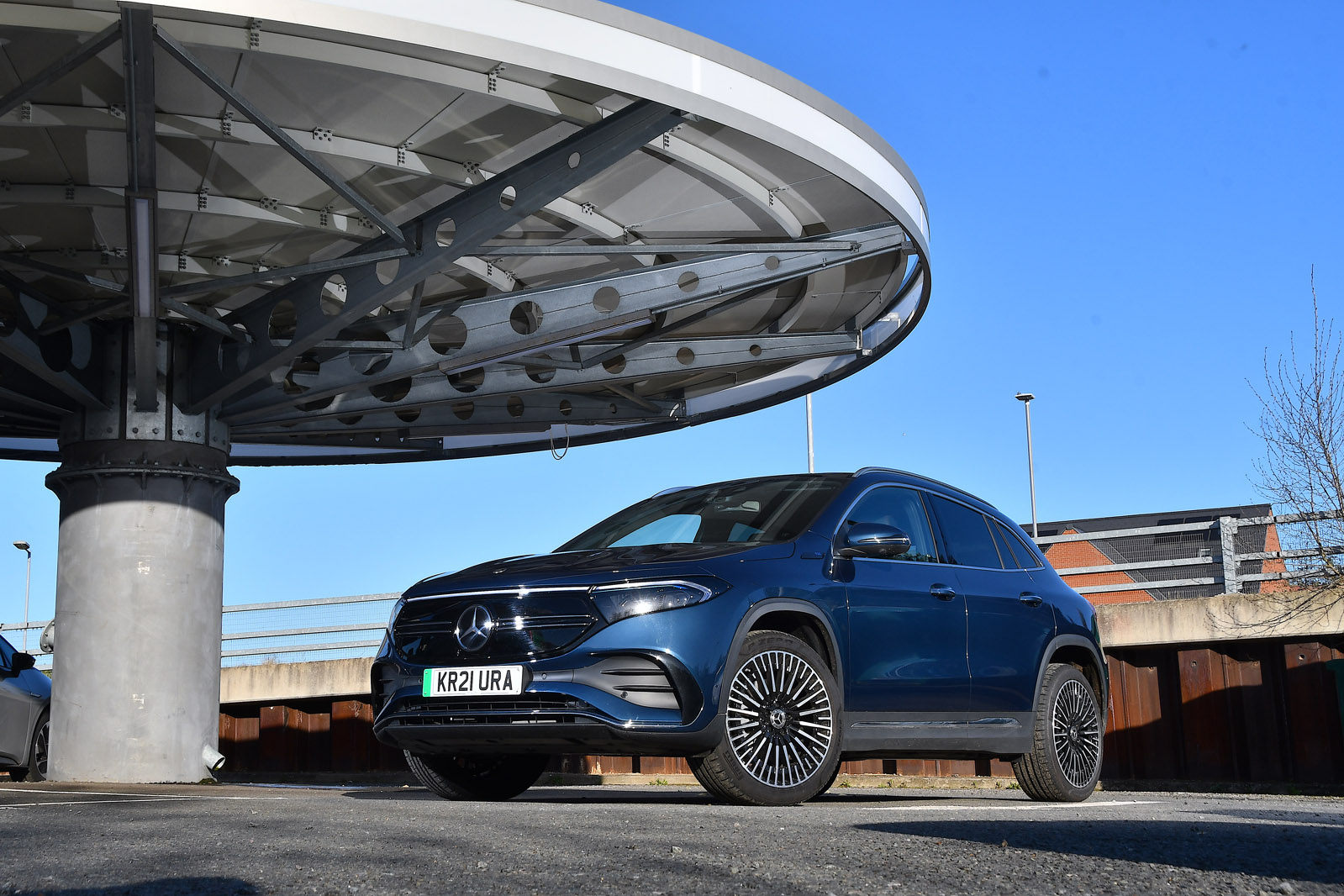The Mercedes EQA is a reasonably practical and usable five-seat crossover hatchback. However, those who test drive one after an equivalent Mustang Mach-E or Skoda Enyaq iV won’t be particularly struck by its spaciousness.
Up front, you sit in fairly perched orientation with the controls, with plenty of space for your legs, head and elbows, in a comfortable driver’s seat and at a height that makes the car easy to slide in and out of.
The car’s controls and its surrounding fascia look and feel familiar, being mostly of Mercedes’ stock compact car type. There’s a matched pair of instrumentation and infotainment screens immediately ahead, with lots of surrounding glossy black plastic and decorative chrome, as well as those ‘designer’ turbine air vents. It’s quite a particular take on a luxury ambience: flashier- and chintzier-looking than some will like (especially owing to the abundance of coloured ambient lighting strips), with a less deep-running sense of underlying material integrity than you might expect. It will probably look and feel sufficiently lavish and ‘premium’ to impress the average driver or passenger, though.
If you find the screen-dominated control interfaces of rivals annoying, you’ll like this car’s physical ventilation controls, its separate tunnel-mounted input device and its infotainment menu shortcut buttons; and although the steering wheel’s spoke-mounted quick-fire controls for the instrument console and infotainment screens seem a bit confusing at first, you soon get used to them – and they often save you from needing to reach an arm out for the central display, or from really taking your eyes off the road. Second-row accommodation is a little meaner than in the front and lags behind key EV rivals. Small adults and teenagers will be comfortable enough, though; child seats can be fixed and removed easily; and Mercedes includes stowage slots in the moulded sides of the rear bench so that the rear seatbelts can be kept out of the way of folded seatbacks or generally be prevented from rattling around.
The boot, although quite wide, has a shorter loading length than most mid-sized SUVs offer and only 340 litres of space behind the seatbacks and under the load-bay cover. With everything folded down and when loading to the roof, the EQA will swallow nearly 400 litres less than an Enyaq iV, so it’s no carrying king. More annoying, though, is that Mercedes has failed to make space for the car’s charging cables anywhere other than in the boot itself.
Infotainment and sat-nav
Mercedes’ twin-screen MBUX infotainment system, with its pair of 10.0in displays, looked cutting edge five years ago; and if it’s been superseded, it may partly be because the marque has moved on to bigger screens and more touchscreen integration. But some of Stuttgart’s latest digital technology isn’t as usable as it should be. This older system is much more intuitive.
There are thumb-pad controls on the steering wheel for the infotainment display, as well as a larger auxiliary input device on the transmission tunnel, with easily accessed, fixed menu buttons. Voice control is also possible, although it doesn’t always recognise your command at the first try.
Our upper-end test car had an excellent head-up display, which relayed speed limit info and navigation tulips very usefully. The augmented reality navigation display still seems a distracting influence, to us at least, when displayed away from your natural line of sight on the infotainment display.


